Gamma rays: Everything you need to know about these powerful packets of energy
Gamma rays can only be detected by sensors made of dense metals and takes over six feet (1.8 meters) of concrete to block.
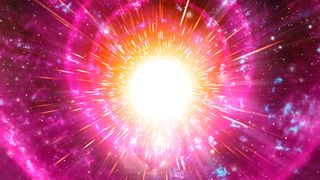

How were gamma rays discovered?
How to stop gamma rays, are gamma rays dangerous, gamma-ray astronomy, gamma-ray bursts, additional resources.
Gamma rays are high-energy photons produced by some of the most violent events in the universe.
Photons of light are massless particles that are essentially packets of energy. Because of a quantum-mechanical phenomenon known as wave-particle duality , particles can behave like waves, and photons are no different. Photons have wavelengths, and the amplitude of their wavelength determines where they sit on the electromagnetic spectrum . Radio and microwave photons sit at the lower energy, longer wavelength end of the spectrum, while in the shorter wavelength, higher-energy regime are photons of ultraviolet, X-rays and the most energetic of them all with the shortest wavelengths: gamma rays.
Gamma rays have wavelengths shorter than 10^-11 meters and frequencies above 30 x 10^18 hertz. The European Space Agency describes how gamma-ray photons have energies in excess of 100,000 electronvolts (eV). We can compare this to X-rays, which NASA describes as having energies between 100 eV and 100,000 eV , and optical photons that we can see with our eyes, which are about 1 eV.
Related: What is the cosmic microwave background?
On Earth, gamma rays are produced by radioactive decay, nuclear weapons and lightning, while in space they are produced by violent, high-energy sources such as solar flares , quasars , black holes tearing stars apart , black-hole accretion disks, exploding stars and the strong gravitational environments of neutron stars .
At the turn of the twentieth century, two forms of radiation emitted by decaying atoms were known, namely alpha particles (which are helium nuclei) and beta particles (which are electrons and positrons).
However, when the French chemist Paul Villard began experimenting with the radioactive element radium, which had been discovered two years prior by Marie and Pierre Curie , he noticed that the ionizing radiation produced by the decay of radium packed a harder punch than either alpha or beta particles.
This radiation received its name — gamma-rays — simply because gamma is the third letter in the Greek alphabet after alpha and beta. Unbeknownst to Villard and his cohorts in the early 1900s, the key difference between gamma rays and alpha/beta particles is that gamma rays are a form of light, whereas alpha and beta particles are made of matter.

To block gamma rays requires a dense material, and the thickness of that material depends on the substance. To reduce the strength of incoming gamma rays by a billion, you need 13.8 feet (4.2 meters) of water, 6.6 feet (2 m) of concrete or 1.3 feet (0.39 m) of lead, according to the radiation protection solution website StemRad .
This poses a problem for gamma-ray telescopes, such as NASA's Fermi Space Telescope . Ordinary telescopes like the Hubble Space Telescope use mirrors and lenses to collect and focus light, but gamma rays will simply pass straight through an ordinary telescope. Instead, gamma-ray telescopes have to employ other means.
On the Fermi Space Telescope, a gamma-ray photon will pass through a device called the Anti-coincidence Detector, which blocks cosmic rays that might give a false signal, according to NASA . The gamma-ray is then absorbed by one of 16 sheets of tungsten, a material that is dense enough to stop gamma rays.
By interacting with the tungsten, the gamma-ray is converted into an electron and a positron (the antimatter or antiparticle counterpart of an electron), the paths of which are read by a tracker, which is a module of silicon strips interweaved by tungsten foil that can determine the direction that the gamma-ray came from in space, based on the trajectory of the electron and the positron.
Finally, the electron and then positron have their energies measured by a calorimeter — a device that measures the energy of a particle by absorbing it — made from cesium iodide, and therefore the energy of the gamma-ray can be determined.
Because of their high energy, gamma rays are ionizing, meaning they can dislodge electrons from atoms , ultimately damaging living cells and causing a hazard to health. However, as with all radiation, it depends upon the dose that you receive.
In small doses, very carefully targeted to limit exposure, they can be used safely as a medical diagnostic tool, or even to kill cancerous cells (ironic since exposure to radiation including gamma rays can cause cancer). In particular, one tool used by doctors is the ' Gamma Knife ', which is an ultra-precise form of surgery in which a beam of gamma rays cuts away diseased brain cells and can even penetrate deep into the brain without damaging the exterior lobes.
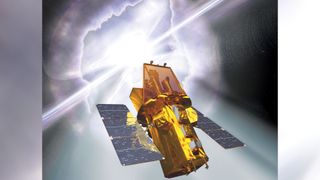
Given their ionizing power, it's fortunate that Earth's atmosphere is able to block gamma rays from space. For astronomers, however, that's unfortunate, because it means that to conduct gamma-ray astronomy observatories have to either be built on mountaintops where the atmosphere is thinner or sent into space.
The first gamma-ray space telescope was launched in 1961 on the NASA Explorer 11 satellite, but things didn't really begin to kick off until the late 1960s and early 1970s with a major finding, and it wasn't even an astronomical telescope that made the discovery.
Over the years there have been many observatories, both on the ground and in space, that have been designed to observe cosmic gamma-ray radiations. In 1990, NASA launched the Compton Gamma-Ray Observatory as the gamma-ray counterpart to the Hubble Space Telescope. The Compton Gamma-Ray Observatory explored the cosmos from 1991 until 2000. The aforementioned BeppoSAX was a joint Italian–Dutch mission that operated between 1996 and 2003, while NASA launched HETE-2 (the High-Energy Transient Explorer; HETE-1 had previously failed in orbit) that tracked down many GRBs between 2000 and 2008.
Currently, as of the end of 2022, several satellites , observatories and telescopes continue to conduct gamma-ray astronomy both on Earth and in space. NASA's Swift satellite , launched in 2004, combines both X-ray and gamma-ray observations, as does Italy's AGILE satellite launched in 2007. In 2002, the European Space Agency launched INTEGRAL , the International Gamma-Ray Astrophysics Laboratory.. The current most sophisticated gamma-ray space telescope is Fermi, which NASA launched in 2008.
Meanwhile, on the ground, there are several gamma-ray observatories including VERITAS (Very Energetic Radiation Imaging Telescope Array System) at the Fred Lawrence Whipple Observatory in Arizona and HESS (High Energy Stereoscopic System) in Namibia.

In 1963, the Soviet Union, the United Kingdom and the United States signed a nuclear test ban treaty that prohibited the world's superpowers from testing any nuclear devices in the atmosphere or in space. However, the U.S. was suspicious that the Soviet Union wouldn't adhere to the treaty, so they launched the Vela series of satellites to watch for any pulses of gamma-ray radiation that could be coming from secretive nuclear detonations. As it happened, gamma rays were detected, but from space: random blasts of powerful gamma-ray energy that seemed to be coming from all around the Earth. But how far away were these gamma-ray bursts ?
Related: Most powerful gamma-ray burst ever seen could help reveal how black holes are born
If these gamma-ray bursts, which are abbreviated to GRBs for short, were coming from our galaxy, then astronomers would detect them mostly in the plane of the Milky Way . Instead, they were spread all over the sky, it could mean only one of two things. Either they were very close, within our solar system , or they were very far away, beyond our galaxy. A special debate was even convened in 1995, echoing a similar ' Great Debate ' in 1920 between Harlow Shapley and Heber D. Curtis that discussed the size of our galaxy based on the distribution of globular clusters .
In the 1995 debate , chaired by Martin Rees, astronomer Bohdan Paczynski of Princeton University argued that GRBs came from very far away, while Donald Lamb of the University of Chicago reasoned that GRBs must be from close by because the energy required for them to be billions of light-years away would contravene the laws of physics.
Just two years later astronomers had their answer when the BeppoSAX satellite detected a gamma-ray burst that the William Herschel Telescope in the Canary Islands was able to quickly follow up on, in the process detecting the faint afterglow of whatever explosion had created the GRB. Measuring the redshift of the afterglow's light revealed it to have come from six billion light-years away. Bohdan Paczynski was right!
There are two main types of GRB. One type is called short GRBs which last just fractions of a second, while the other kind is known as the long GRBs, and can last many seconds up to an hour. Short GRBS are emitted during the merger of two neutron stars , while long GRBs are the death cries of rare, massive stars .
Physicists Andrew MacFadyen and Stan Woosley of the University of California, Santa Cruz, developed a model to explain how stars could explode and produce long GRBs without breaking the laws of physics. When a massive star with 50–100 times the mass of the sun reaches the end of its life, the star begins to collapse in on its core, and if the star is rotating fast enough, the energy within the collapsing layers rebounds off the core and is blasted out in two jets that move at almost the speed of light and blow the star apart. Charged particles within these jets spiral around powerful magnetic fields and produce something called synchrotron radiation, in the form of the gamma rays that we observe. Because the gamma rays are only released in the direction of the jets, and not in all directions at once, the total energy released does not contravene the laws of physics.
Learn more about ionizing radiation with the United States Environment Protection Agency (EPA) , and the American Cancer Society . Explore gamma rays in more detail in a tour of the electromagnetic spectrum with NASA Science.
Follow Keith Cooper on Twitter @21stCenturySETI. Follow us on Twitter @Spacedotcom and on Facebook .
Bibliography
Flash! The Hunt for the Biggest Explosions in the Universe by Govert Schilling (Cambridge University Press, 2002)
The Biggest Bangs: The Mystery of Gamma-Ray Bursts, The Most Violent Explosions in the Universe by Jonathan Katz (Oxford University Press, 2002)
Join our Space Forums to keep talking space on the latest missions, night sky and more! And if you have a news tip, correction or comment, let us know at: [email protected].
Get the Space.com Newsletter
Breaking space news, the latest updates on rocket launches, skywatching events and more!

Keith Cooper is a freelance science journalist and editor in the United Kingdom, and has a degree in physics and astrophysics from the University of Manchester. He's the author of "The Contact Paradox: Challenging Our Assumptions in the Search for Extraterrestrial Intelligence" (Bloomsbury Sigma, 2020) and has written articles on astronomy, space, physics and astrobiology for a multitude of magazines and websites.
Uranus and Neptune aren't made of what we thought, new study hints
A 'snowball fight' may help scientists find life on Jupiter's moon Europa
Cosmic fountain is polluting intergalactic space with 50 million suns' worth of material
- larbud Interesting; no mention of 1859. Reply
- billslugg The 1859 Carrington event was caused by a stream of charged particles from a solar flare. Any gamma rays emitted would have been blocked by the Earth's atmosphere. Reply
- View All 2 Comments
Most Popular
- 2 India aims to achieve 'debris-free' space missions by 2030
- 3 Scientists use AI to reconstruct energetic flare blasted from Milky Way's supermassive black hole
- 4 Earth Day 2024: Witness our changing planet in 12 incredible satellite images
- 5 NASA's Voyager 1 spacecraft finally phones home after 5 months of no contact
Here's how astronomers found one of the rarest phenomenons in space
The source of a huge burst of radiation from deep space that hit Earth in 2023 likely was one of the rarest and most bizarre objects in the universe: a magnetar.

On November 12, 2023, a huge burst of gamma radiation hit the European Space Agency’s orbiting INTEGRAL satellite . The rush of radiation lasted just one-tenth of a second, but immediately, an alert went out to astronomers around the world . Working as fast as possible, they turned their instruments toward the point in deep space the gamma rays had come from to see if they could find its source. And that’s when things started to get very strange indeed.
Gamma rays are incredibly bright, energetic jets that come from deep space and, on occasion, hit Earth. They have been detected since the 1960s, and astronomers thought they knew enough about the phenomenon to suspect this gamma ray was emitted by two neutron stars colliding far off in space. Neutron stars are the incredibly dense cores of dead stars, and their collisions can be explosive and send out gamma rays and other radiation, followed by gravitational waves.
“If this had to been a normal gamma ray burst, what people would have expected is to see the so called afterglow,” Sandro Mereghetti, a researcher at Italy’s Istituto di Astrofisica Spaziale e Fisica Cosmica Milano, says. “Even short bursts of gamma rays then emit radiation in X-rays in the optical band and in the radio band that lasts for several hours or even days.”
But that’s not what the astronomers found at all.
Rare origins
The X-rays were nowhere to be found. So Mereghetti and a team of fellow scientists hypothesized that the source of the gamma radiation in this instance might in fact be one of the rarest and most powerful explosions in the known universe: a giant flare emitted from a magnetar , a kind of neutron star that is highly magnetic and, despite being the size of a small city, is the same mass as our sun.
Magnetars, which like other neutron stars are birthed from the collapse of much more giant stars, have extremely powerful magnetic fields—thousands of times stronger than those found on other neutron stars—for reasons that still mystify astronomers.
FREE BONUS ISSUE
“Magnetars are powered by the decay of the magnetic field,” Mereghetti explains. “And this causes a lot of heat, so these are hot objects from this process, which also causes the emission of giant flares.” What happens, he says, is that the magnetic fields finally snap, a process similar to what happens on the sun when its magnetic fields snap and burp out coronal mass ejections —flares of energy that can cause auroras here on Earth.
These ejections from our sun are powerful—often consisting of billions of tons of plasma. But they pale in comparison to a magnetar giant flare, which can emit, in just a hundredth of a second, the same amount of energy put out by the sun over the course of a million years.
You May Also Like
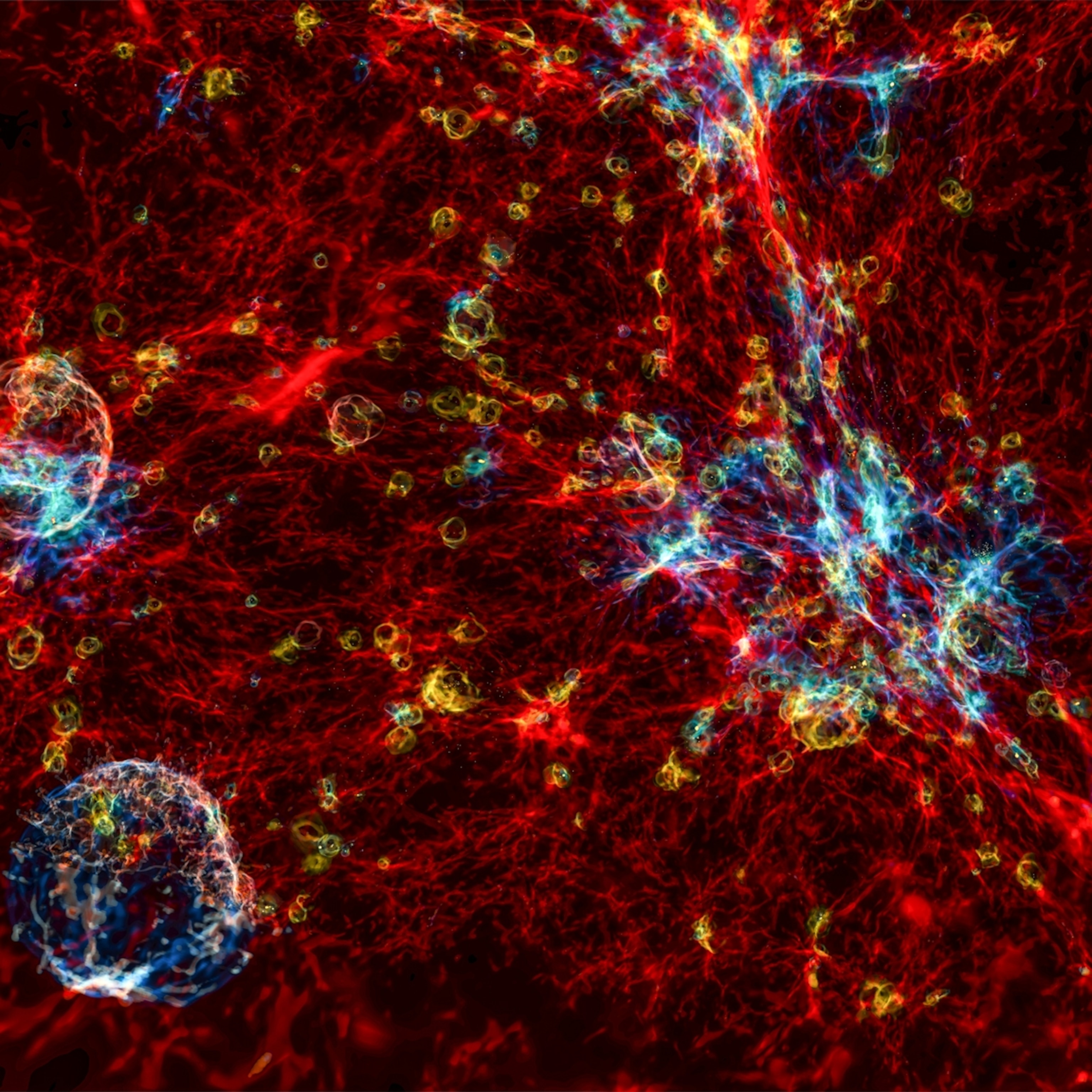
The world’s most powerful telescope is rewriting the story of space and time

How fast is the universe really expanding? The mystery deepens.

Something in our galaxy is flashing every 20 minutes—but what?
“Neutron stars are the densest matter in the universe, so if you keep adding mass, eventually that will collapse to a black hole, which isn’t matter anymore,” Eric Burns, an assistant professor of astrophysics at Louisiana State University who was not involved in the new work, says. “So that extreme density allows that object to house incredibly powerful magnetic fields. If it wasn’t that dense, the magnetic fields would just rip the star apart.”
Those unique conditions make magnetars rare and their giant flares even rarer. Gamma ray bursts are detected roughly once a month, Mereghetti says, but only three magnetar giant flares have been spotted from within the 100 billion stars within the Milky Way in the last 50 years. Spotting the flares from outside our galaxy is even harder, as you need to be pointing the detector in the right direction and be able to differentiate their radiation from other sources of gamma ray explosions.
Yet for the first time, Merenghetti and his colleagues have managed to do just that. Their hypothesis—a magnetar—seems to have borne fruit and given them a scientific first.
Lives of stars
In a new paper published in Nature , Mereghetti and his team lay out their case that the eruption detected in November, 2023 was the result of a giant flare from a magnetar located in the M82 galaxy, which is 12,000 light-years away.
“In the past, there have been a few cases of tentative discoveries of giant flairs in external galaxies, but the one that we report is much more convincing just because it's the most localized, with a much better procedure,” he says.
The results have astronomers “exceptionally excited,” says Burns, particularly because of the origin in M82. Due to the effects of its proximity to another galaxy, M82 is a nursery of sorts to massive stars, which are 10 times more common there than in the Milky Way. It is also a place where stars live fast and burn bright, making it a particularly curious object for study.
“We believe that the population of magnetars in M82 is quite large, so maybe it's not a coincidence that this event was discovered in this galaxy and not in another one,” says Mereghetti.
His team’s discovery was a fortuitous one: the INTEGRAL satellite just happened to be looking in the general vicinity of M82 when the gamma radiation arrived. The satellite itself is due to soon reenter the Earth’s atmosphere, with no replacement yet scheduled for launch. In the meantime, Mereghetti said more attention will be paid to the M82 galaxy in the hopes that more giant flares can be spotted. In turn, these can offer astronomers precious data on the physics of intense magnetic fields and the life cycle of stars.
“Stars are born, they live, they die, they explode and produce another star,” he says. “There is a cycle, kind of a biology in the universe, and magnetars are one of these elements in the evolutionary structure of the lifetime of stars.”
Related Topics
- SPACE WEATHER

It looked like a bizarre alignment of meteors. It was something else.
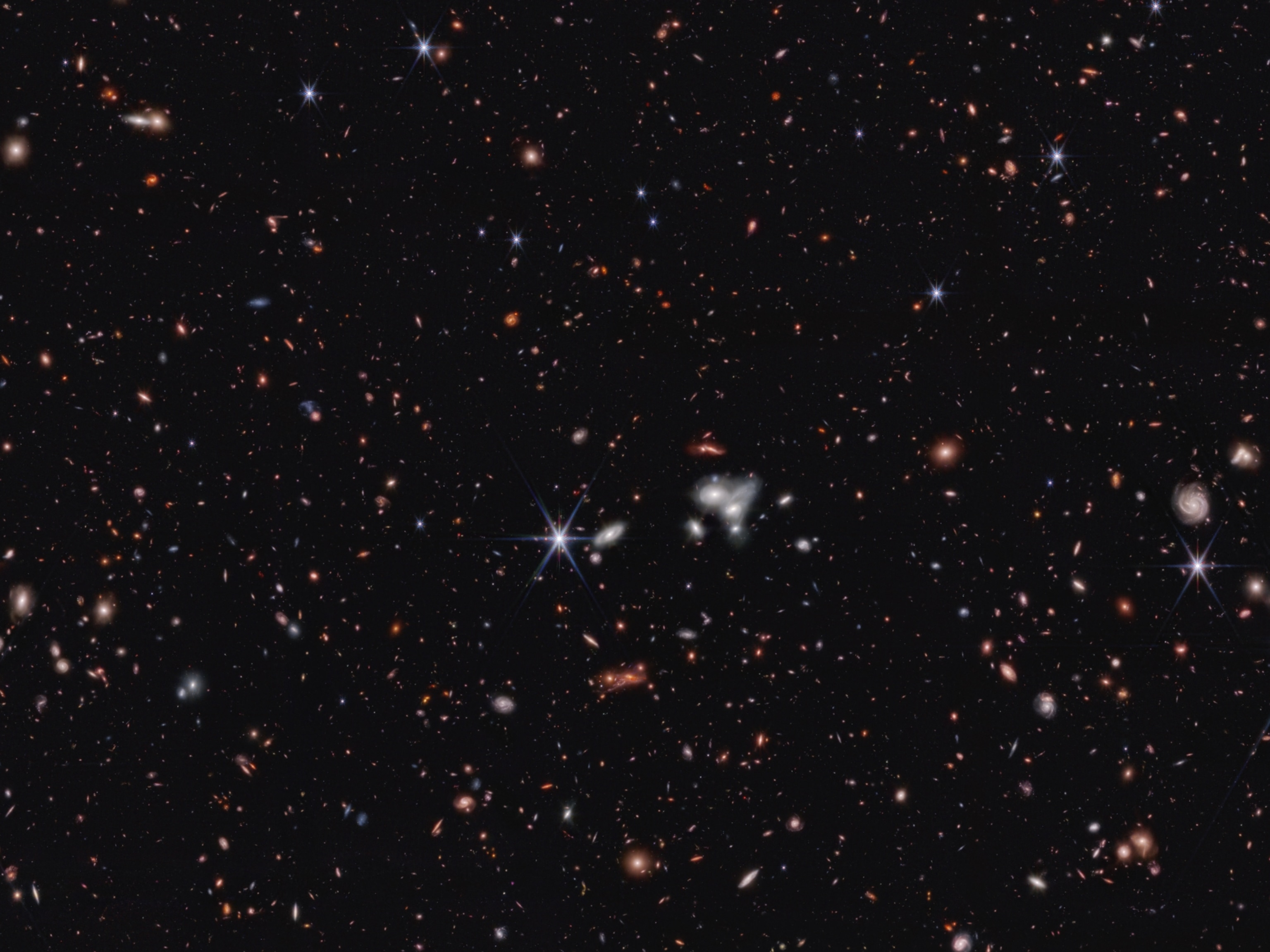
This supermassive black hole was formed when the universe was a toddler

The 11 most astonishing scientific discoveries of 2023
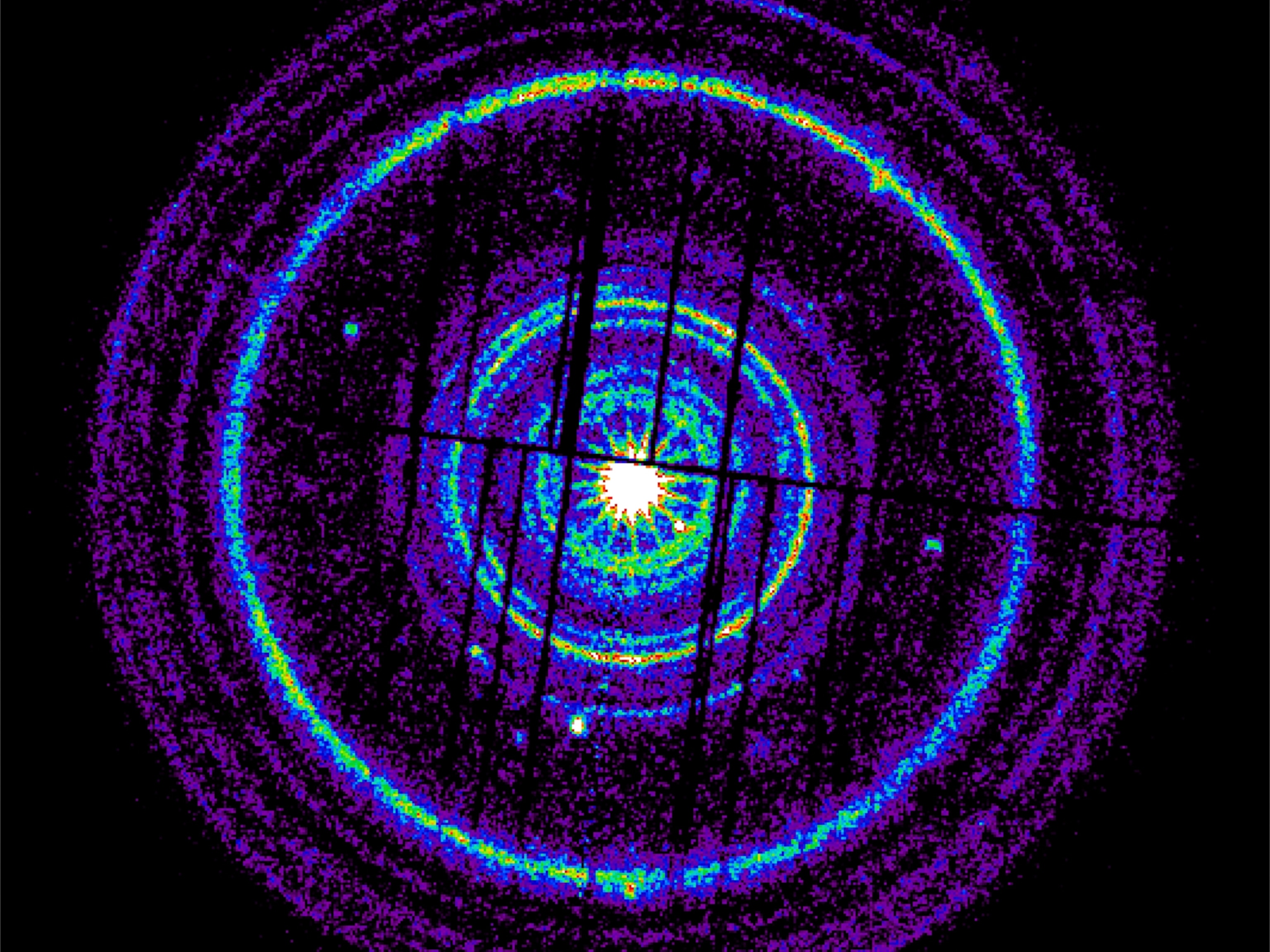
The brightest blast ever seen in space continues to surprise scientists
Every 80 years, this star appears in the sky—see the once-in-a-lifetime phenomenon.
- Environment
- Perpetual Planet
- History & Culture
History & Culture
- History Magazine
- Mind, Body, Wonder
- Terms of Use
- Privacy Policy
- Your US State Privacy Rights
- Children's Online Privacy Policy
- Interest-Based Ads
- About Nielsen Measurement
- Do Not Sell or Share My Personal Information
- Nat Geo Home
- Attend a Live Event
- Book a Trip
- Inspire Your Kids
- Shop Nat Geo
- Visit the D.C. Museum
- Learn About Our Impact
- Support Our Mission
- Advertise With Us
- Customer Service
- Renew Subscription
- Manage Your Subscription
- Work at Nat Geo
- Sign Up for Our Newsletters
- Contribute to Protect the Planet
Copyright © 1996-2015 National Geographic Society Copyright © 2015-2024 National Geographic Partners, LLC. All rights reserved
James Webb telescope finds origins of the biggest explosion since the Big Bang — revealing a new cosmological mystery
Seen in 2022, a gamma-ray burst nicknamed the BOAT is believed to be the brightest explosion ever witnessed by humanity. But the James Webb Telescope's search for its origins has only thrown up more questions.
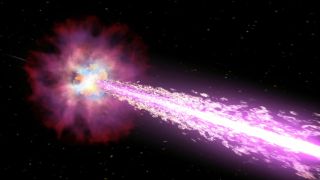
The James Webb Space Telescope has discovered the cause of the most powerful cosmic explosion since the Big Bang.
The explosion (nicknamed the BOAT or "brightest of all time" ) is a gamma-ray burst (GRB) that spat photons at Earth with more energy than those found inside the Large Hadron Collider. This light was detected by telescopes in orbit and on the ground on October 9, 2022, and came from 2.4 billion light-years away in the constellation Sagitta.
Now, a team of scientists have tracked down BOAT's likely origins to a gigantic supernova that came after the collapse of a giant star.
Yet their research reveals a new mystery — supernovas such as the one behind the BOAT are supposed to be cosmic factories for heavy elements such as platinum and gold, but when the researchers looked, they found no evidence for them. The scientists published their findings April 12 in the journal Nature Astronomy .
"When we confirmed that the GRB was generated by the collapse of a massive star, that gave us the opportunity to test a hypothesis for how some of the heaviest elements in the universe are formed," lead study author Peter Blanchard , an astrophysicist at Northwestern University, said in a statement . "We did not see signatures of these heavy elements, suggesting that extremely energetic GRBs like the BOAT do not produce these elements.
“That doesn't mean that all GRBs do not produce them,” Blanchard added, “but it's a key piece of information as we continue to understand where these heavy elements come from."
Related: James Webb telescope confirms there is something seriously wrong with our understanding of the universe
Sign up for the Live Science daily newsletter now
Get the world’s most fascinating discoveries delivered straight to your inbox.
When a massive star runs out of fuel, it collapses before exploding outward in a gigantic supernova explosion, leaving behind an ultra-dense neutron star or a black hole . It is these stellar explosions — and occasionally even collisions between two neutron stars — that produce powerful bursts of gamma rays that can be picked up by observatories in space and even on Earth.
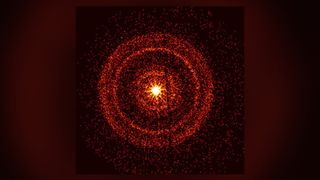
The first gamma-ray bursts were detected accidentally by US military satellites in the 1960s. Since then, they have continued to ping up on equipment that is able to detect their high-energy light. But when the BOAT appeared, it was at least 10 times brighter than any other cosmic explosion ever witnessed.
"The event produced some of the highest-energy photons ever recorded by satellites designed to detect gamma rays," Blanchard said. "This was an event that Earth sees only once every 10,000 years.”
The burst was so bright, in fact, that the astronomers had to wait six months for it to die down before they could use the James Webb Space Telescope to look at it directly.
"The GRB was so bright that it obscured any potential supernova signature in the first weeks and months after the burst," Blanchard said. "At these times, the so-called afterglow of the GRB was like the headlights of a car coming straight at you, preventing you from seeing the car itself. So, we had to wait for it to fade significantly to give us a chance of seeing the supernova."
— 'It could be profound': How astronomer Wendy Freedman is trying to fix the universe
— James Webb telescope discovers oldest black hole in the universe
— 8 stunning James Webb Space Telescope discoveries made in 2023
After pointing the JWST's Near Infrared Spectrograph (NIRSpec) instrument towards the source of the explosion, the researchers found signatures of elements such as oxygen and calcium, which are commonly found within supernovas. But they didn't find any elements heavier than iron among the debris, potentially ruling out bright explosions such as the BOAT as heavy metal producers.
And surprisingly, despite the extreme brightness of the gamma-ray burst, the supernova it came from was of fairly average brightness. It's possible, according to the researchers, that the BOAT acquired its extraordinary intensity from the exploding star's material being funneled along an unusually narrow relativistic jet — a near-light-speed stream of charged matter.
"It's like focusing a flashlight's beam into a narrow column, as opposed to a broad beam that washes across a whole wall," co-author Tanmoy Laskar , an assistant professor of physics at the University of Utah, said in the statement. "In fact, this was one of the narrowest jets seen for a gamma-ray burst so far, which gives us a hint as to why the afterglow appeared as bright as it did. There may be other factors responsible as well, a question that researchers will be studying for years to come."
The researchers say their next steps will be to use the JWST to look at other supernovas. Contrasting their different brightnesses, jets, chemical elements and host galaxy characteristics could help them figure out just how unusual the BOAT was, and the conditions under which the universe's heavy elements are made.

Ben Turner is a U.K. based staff writer at Live Science. He covers physics and astronomy, among other topics like tech and climate change. He graduated from University College London with a degree in particle physics before training as a journalist. When he's not writing, Ben enjoys reading literature, playing the guitar and embarrassing himself with chess.
Scientists find one of the oldest stars in the universe in a galaxy right next to ours
Enormous explosion in 'Cigar Galaxy' reveals rare type of star never seen beyond the Milky Way
Hundreds of black 'spiders' spotted in mysterious 'Inca City' on Mars in new satellite photos
- adamz Thanks for sharing. My understanding thus far is that the heavier metals are produced from the collision of two heavy objects with high energy, such as the impact of two neuron stars. I recall that was witnessed as producing gold in at least one observation. Unless the supernova occurs in a star with so much mass that when it collapses, the energy of the collapse is commensurate to the high velocity impact of two neutron stars, then I could see it being limited to only releasing the elements up to iron that were already contained within the star. Perhaps the reason it was so bright is that the energy required to produce those heavier elements instead was released as EM spectra. You can't have both, so to speak, because the finite energy can only do work (produce heavier elements) or be released (shine brightly). Reply
- Hickory NASA should be moved to the Department of Defense and only projects of direct benefit to the military should be funded. Any other “exploration” or science projects should be pursued by companies funded solely by the private donations of hobbyists or other interested parties. Reply
- TGor26 Omitting the word "theory" after Big Bang, does not negate the reality that it is still, in fact, just a theory and NOT fact. I know science exists, but so does God and He created all these things humans call science. And if people choose not to believe that fact, that's o.k. too, but at least remember not to push the "theory" as fact also, since it can't be proven, nor has it been proven in all these years either. Reply
- View All 3 Comments
Most Popular
- 2 Giant, 82-foot lizard fish discovered on UK beach could be largest marine reptile ever found
- 3 Global 'time signals' subtly shifted as the total solar eclipse reshaped Earth's upper atmosphere, new data shows
- 4 Rare 'porcelain gallbladder' found in 100-year-old unmarked grave at Mississippi mental asylum cemetery
- 5 'I nearly fell out of my chair': 1,800-year-old mini portrait of Alexander the Great found in a field in Denmark
- 2 Claude 3 Opus has stunned AI researchers with its intellect and 'self-awareness' — does this mean it can think for itself?
- 3 NASA reveals 'glass-smooth lake of cooling lava' on surface of Jupiter's moon Io
- 4 'We were in disbelief': Antarctica is behaving in a way we've never seen before. Can it recover?
- 5 George Washington's stash of centuries-old cherries found hidden under Mount Vernon floor
We have completed maintenance on Astronomy.com and action may be required on your account. Learn More

- Login/Register
- Solar System
- Exotic Objects
- Upcoming Events
- Deep-Sky Objects
- Observing Basics
- Telescopes and Equipment
- Astrophotography
- Space Exploration
- Human Spaceflight
- Robotic Spaceflight
- The Magazine
How to help astronomers study gamma-ray bursts
When faraway stars explode, they send out flashes of energy called gamma-ray bursts that are bright enough that telescopes back on Earth can detect them. Studying these pulses, which can also come from mergers of some exotic astronomical objects such as black holes and neutron stars, can help astronomers like me understand the history of the universe.
Space telescopes detect on average one gamma-ray burst per day, adding to thousands of bursts detected throughout the years, and a community of volunteers are making research into these bursts possible.
On Nov. 20, 2004, NASA launched the Neil Gehrels Swift Observatory , also known as Swift. Swift is a multiwavelength space telescope that scientists are using to find out more about these mysterious gamma-ray flashes from the universe.
Gamma-ray bursts usually last for only a very short time, from a few seconds to a few minutes, and the majority of their emission is in the form of gamma rays, which are part of the light spectrum that our eyes cannot see. Gamma rays contain a lot of energy and can damage human tissues and DNA .
Fortunately, Earth’s atmosphere blocks most gamma rays from space, but that also means the only way to observe gamma-ray bursts is through a space telescope like Swift. Throughout its 19 years of observations, Swift has observed over 1,600 gamma-ray bursts . The information it collects from these bursts helps astronomers back on the ground measure the distances to these objects.
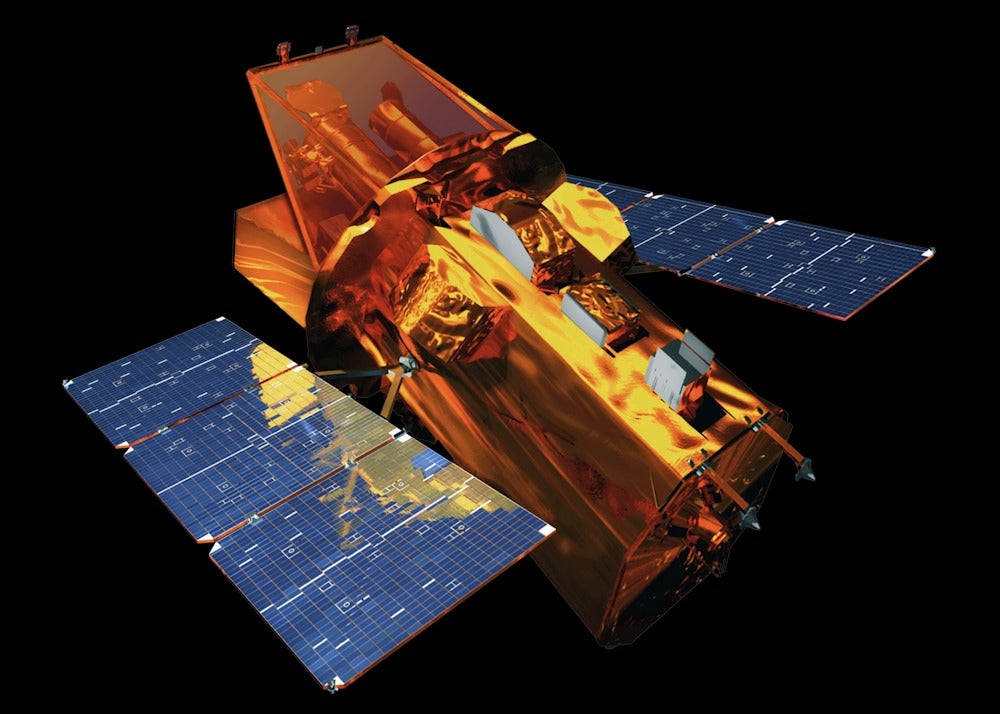
Looking back in time
The data from Swift and other observatories has taught astronomers that gamma-ray bursts are one of the most powerful explosions in the universe. They’re so bright that space telescopes like Swift can detect them from across the entire universe.
In fact, gamma-ray bursts are among one of the farthest astrophysical objects observed by telescopes.
Because light travels at a finite speed, astronomers are effectively looking back in time as they look farther into the universe.
The farthest gamma-ray burst ever observed occurred so far away that its light took 13 billion years to reach Earth. So when telescopes took pictures of that gamma-ray burst, they observed the event as it looked 13 billion years ago.
Gamma-ray bursts allow astronomers to learn about the history of the universe , including how the birth rate and the mass of the stars change over time.
Types of gamma-ray bursts
Astronomers now know that there are basically two kinds of gamma-ray bursts – long and short. They are classified by how long their pulses last. The long gamma-ray bursts have pulses longer than two seconds, and at least some of these events are related to supernovae – exploding stars.
When a massive star, or a star that is at least eight times more massive than our Sun, runs out of fuel, it will explode as a supernova and collapse into either a neutron star or a black hole.
Both neutron stars and black holes are extremely compact. If you shrank the entire Sun into a diameter of about 12 miles, or the size of Manhattan, it would be as dense as a neutron star .
Some particularly massive stars can also launch jets of light when they explode. These jets are concentrated beams of light powered by structured magnetic fields and charged particles. When these jets are pointed toward Earth, telescopes like Swift will detect a gamma-ray burst .
On the other hand, short gamma-ray bursts have pulses shorter than two seconds. Astronomers suspect that most of these short bursts happen when either two neutron stars or a neutron star and a black hole merge.
When a neutron star gets too close to another neutron star or a black hole, the two objects will orbit around each other, creeping closer and closer as they lose some of their energy through gravitational waves .
These objects eventually merge and emit short jets. When the short jets are pointed toward Earth, space telescopes can detect them as short gamma-ray bursts.
Classifying gamma-ray bursts
Classifying bursts as short or long isn’t always that simple. In the past few years, astronomers have discovered some peculiar short gamma-ray bursts associated with supernovae instead of the expected mergers. And they’ve found some long gamma-ray bursts related to mergers instead of supernovae.
These confusing cases show that astronomers do not fully understand how gamma-ray bursts are created. They suggest that astronomers need a better understanding of gamma-ray pulse shapes to better connect the pulses to their origins.
But it’s hard to classify pulse shape, which is different than pulse duration, systematically. Pulse shapes can be extremely diverse and complex. So far, even machine learning algorithms haven’t been able to correctly recognize all the detailed pulse structures that astronomers are interested in.
Community science
My colleagues and I have enlisted the help of volunteers through NASA to identify pulse structures. Volunteers learn to identify the pulse structures, then they look at images on their own computers and classify them.
Our preliminary results suggest that these volunteers – also referred to as citizen scientists – can quickly learn and recognize gamma-ray pulses’ complex structures. Analyzing this data will help astronomers better understand how these mysterious bursts are created.
Our team hopes to learn about whether more gamma-ray bursts in the sample challenge the previous short and long classification. We’ll use the data to more accurately probe the history of the universe through gamma-ray burst observations .
This citizen science project, called Burst Chaser , has grown since our preliminary results, and we’re actively recruiting new volunteers to join our quest to study the mysterious origins behind these bursts.
The author is an assistant professor of physics, University of Tampa
This article was first published on The Conversation. It is republished here under a Creative Commons license.

How many stars die in the Milky Way each year?

2024 Full Moon calendar: Dates, times, types, and names

7 unconfirmed, unlucky tales of people killed by meteorites

Starmus: The world’s greatest science party

A Stonehenge mystery could be solved soon during a rare lunar event

The best telescopes if you want to spend from $90 to $11,000

Meet Katya Echazarreta, the first Mexican-born woman to travel to space

Evidence grows that meteorites, comets could have brought essentials of life to early Earth

Catch the Lyrid meteor shower: This Week in Astronomy with Dave Eicher
National Aeronautics and Space Administration
Goddard space flight center, imagine the universe, astronomer's toolbox.
- Cosmic Objects
- Big Questions
- Featured Science
- Observatories
- Scientist Profiles
- You Be the Astrophysicist
- The Cosmic Distance Scale
- Lesson Plans
- Ask an Astrophysicist
- Other Resources
- News #include virtual="/news/newsNav.html"
Additional Links
Related Topics
For Educators
Gamma-ray Astronomy
Long before experiments could detect gamma rays emitted by cosmic sources, scientists had known that the Universe should be producing such high energy photons . Hard work by several brilliant scientists had shown us that a number of different processes which were occurring in the Universe would result in gamma-ray emission. These processes included cosmic ray interactions with interstellar gas, supernova explosions, and interactions of energetic electrons with magnetic fields . In the 1960s, we finally developed the ability to detect these emissions, and we have been looking at them ever since.
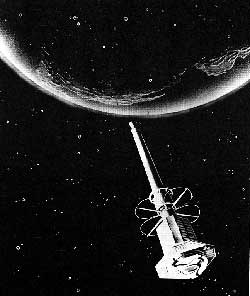
Artist's concept of Explorer 11 in orbit. (Credit: NASA)
Gamma-rays coming from space are mostly absorbed by the Earth's atmosphere . So gamma-ray astronomy could not develop until it was possible to get our detectors above all or most of the atmosphere, using balloons or spacecraft. The first gamma-ray telescope carried into orbit , on the Explorer 11 satellite in 1961, picked up fewer than 100 cosmic gamma-ray photons. These appeared to come from all directions in the Universe, implying some sort of uniform "gamma-ray background". Such a background would be expected from the interaction of cosmic rays (very energetic charged particles in space) with gas found between the stars .
The first detection of significant gamma-ray emission from our galaxy was made in 1967 by the the gamma-ray detector aboard the OSO-3 satellite. In fact, OSO-3 also detected the first gamma-rays from outside our galaxy! All told, it detected 621 cosmic gamma rays. However, the field of gamma-ray astronomy took great leaps forward with the SAS-2 (1972) and the COS-B (1975-1982) satellites. These two satellites provided an exciting view into the high-energy universe, sometimes called the "violent" universe, because the type of events in space that produce gamma rays tend to be explosions and high-speed collisions. The data from the satellites confirmed the earlier findings of the gamma-ray background, produced the first detailed map of the sky at gamma-ray wavelengths , and detected a number of point sources, where the sources of radiation were very concentrated and emanated from a small area. However, the poor resolution of the instruments made it impossible to identify most of these point sources with individual stars or stellar systems.
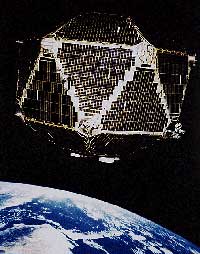
The Vela 5B satellite in low-Earth orbit. (Credit: LANL)
Perhaps the most spectacular discovery in gamma-ray astronomy came in the late 1960s and early 1970s from a collection of defense satellites that were put into orbit for a reason completely unrelated to astronomy research. Detectors on board the Vela satellite series were designed to detect flashes of gamma rays from nuclear bomb blasts. They began to record bursts of gamma rays, not from the vicinity of Earth, but from deep space. These gamma-ray bursts (GRBs) can last for fractions of a second to minutes, popping off like cosmic flashbulbs from unexpected directions, flickering, and then fading after briefly dominating the gamma-ray sky. Studied for over 25 years with instruments on board a variety of satellites and space probes, including Soviet Venera spacecraft and the Pioneer Venus Orbiter , the sources of these enigmatic high-energy flashes for a while remained a mystery. In one of the most intense debates in modern astrophysics, some scientists claimed that the bursts originate in a halo of neutron stars which surround our Galaxy while others argued that their origins are far beyond the Galaxy, at cosmological distances . This was settled in 1996 when the BeppoSax satellite and the Hubble Space Telescope pinpointed the location of a gamma-ray burst in a distant galaxy.
In 1977, NASA announced plans to build a "great observatory" for gamma-ray astronomy. The Compton Gamma-Ray Observatory (CGRO) was designed to take advantage of the major advances in detector technology during the 1980s, and was launched in 1991. The satellite carried four major experiments which greatly improved the spatial and temporal resolution of gamma-ray observations. The CGRO provided large amounts of data which have been used to improve our understanding of the high-energy processes in our Universe. CGRO was de-orbited in June 2000 as a result of the failure of one of its stabilizing gyroscopes.

Artist's rendering of the Swift satellite. (Credit: Spectrum Astro)
In November 2004, NASA launched the Swift satellite. Its primary mission is to detect and locate GRBs as quickly as possible, report the position of the burst, then follow up with other observations of that location in the X-ray, UV and visual spectra. On April 13, 2010, NASA's Swift satellite recorded its 500th GRB.
To continue the study of the universe in the gamma-ray spectrum, Swift currently operates in conjunction with the Fermi Gamma-Ray Space Telescope , launched in 2008. Fermi, originally called GLAST (Gamma-ray Large Area Space Telescope), also studies GRBs, as well as blazars, neutron stars, gamma-ray background radiation, supernova remnants, dark matter and more.
What can gamma rays tell us about the cosmos? Gamma-rays are the most energetic form of electromagnetic radiation , with over 10,000 times more energy than visible light photons . If you could see gamma-rays, the night sky would look strange and unfamiliar. The familiar sights of constantly shining stars and galaxies would be replaced by something ever-changing. Your gamma-ray vision would peer into the hearts of solar flares , supernovae , neutron stars , black holes , and active galaxies . Gamma-ray astronomy presents unique opportunities to explore these exotic objects. By exploring the universe at these high energies, scientists can search for new physics, testing theories and performing experiments which are not possible in earth-bound laboratories. Watch the video below to see a few of the highlights of Fermi's first five years in orbit for an idea of the types of objects gamma-ray astronomers study.
Fermi at five years, a compilation video summarizing the wide range of science from the first five years of the Fermi Gamma-ray Telescope. (Credit: NASA)

- Project Leader: Dr. Barbara Mattson
- Web Curator: J.D. Myers
- Responsible NASA Official : Dr. Andy Ptak
- Privacy Policy & Important Notices
- Page Last Updated: 12-Apr-2019
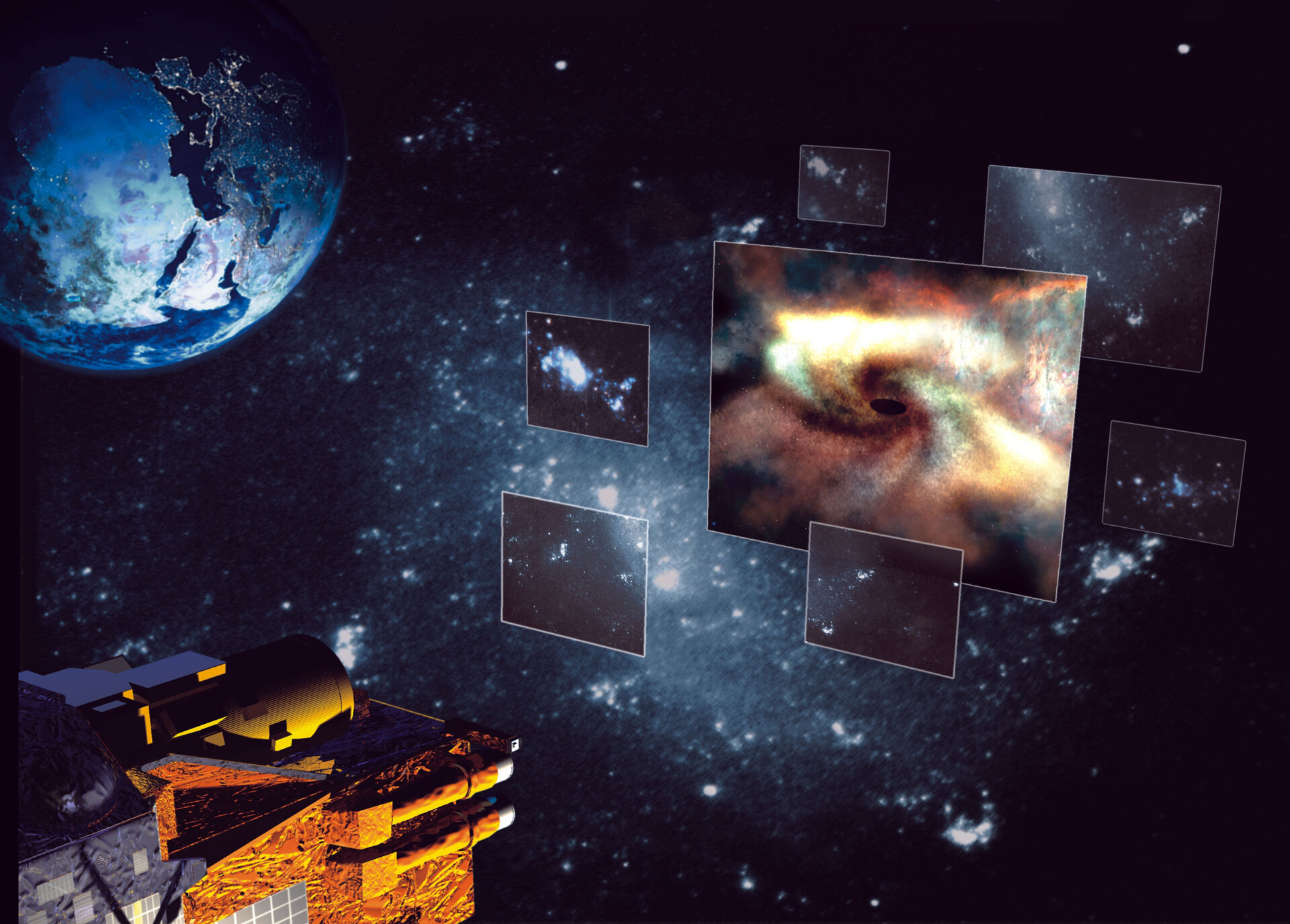
Why do we observe gamma rays?
Light, or electromagnetic radiation, comes in many forms. There are radio waves, microwaves, infrared light, visible light, ultraviolet light, X-rays and gamma rays, all of which form what is known as the 'electromagnetic spectrum'.
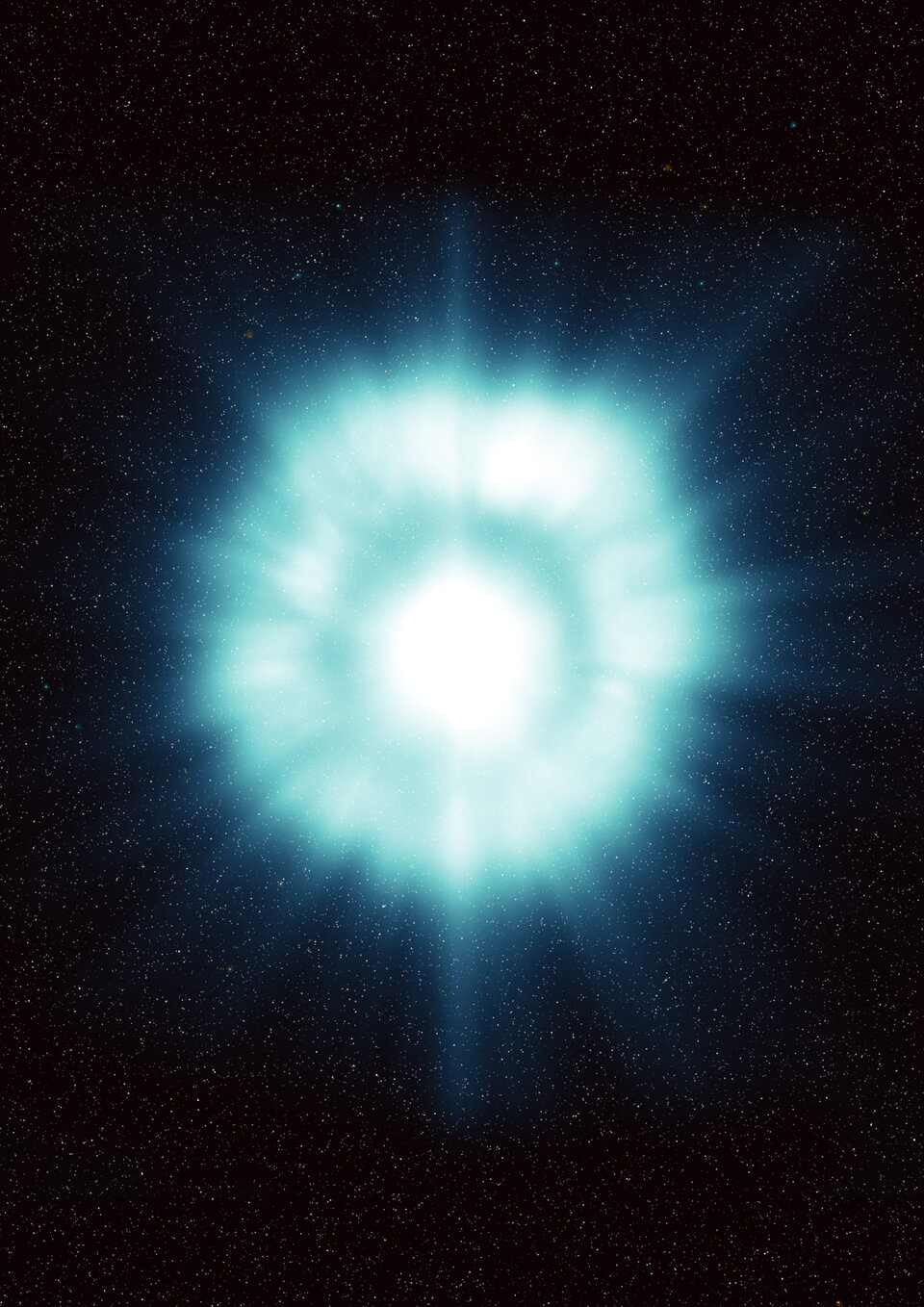
Oddly enough, visible light – to which human eyes are sensitive – is the smallest band of radiation. To our eyes, what we see seems like the entire Universe; yet there is much more out there.
Different types of objects in the Universe emit different types of radiation. Our Sun is a rather obvious source of visible light. But it also glows in radio waves, infrared, ultraviolet light and X-rays. Some objects emit only radio waves or only X-rays. This is why it is important to study the Universe with various kinds of space observatories.
ESA’s Integral satellite is looking at the Universe, mainly concentrating on gamma rays. These are produced by spectacular events in the Universe such as stars exploding, matter falling into black holes and celestial objects colliding. By collecting gamma rays, astronomers are able to see these violent events and can judge exactly how they shape the Universe.
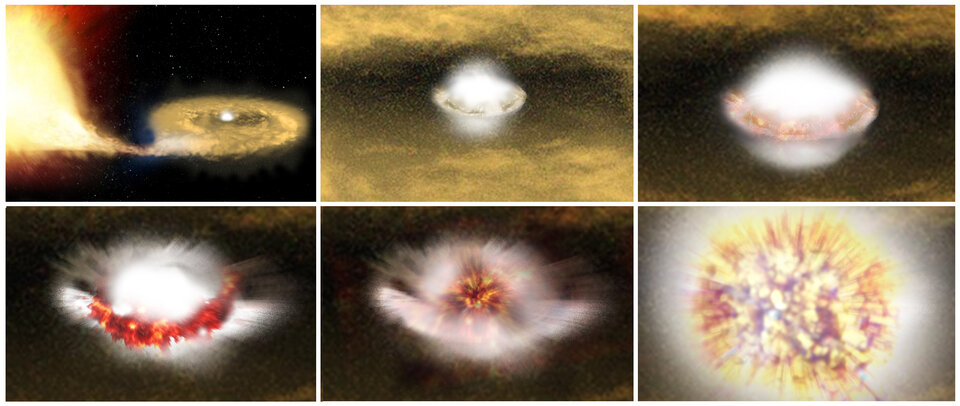
For example, some chemical elements are created during explosions in which individual stars blow themselves to pieces. The new chemicals leave gamma-ray fingerprints in the fireball for astronomers to find. By studying these, Integral is piecing together how these chemicals are created.
Integral is also studying the mysterious blasts known as gamma-ray bursts. These explode at random in distant realms of the Universe and are probably caused by the collision of neutron stars (the hearts of dead stars) or may be the explosion of very massive stars.
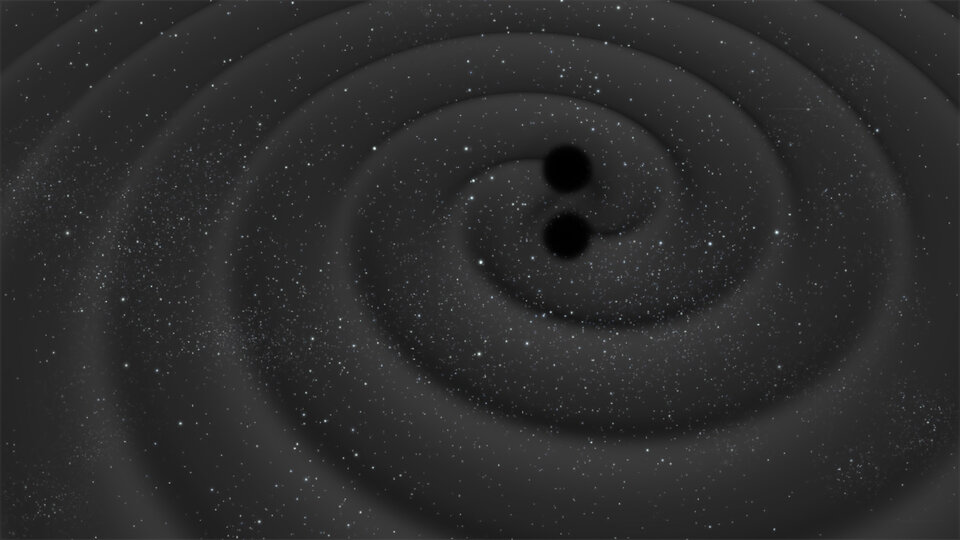
Integral is designed to capture not just gamma rays but also X-rays and visible light. This complementary data helps astronomers identify the celestial object that is releasing the gamma rays and allow it to be more fully analysed.
In 1999, ESA launched XMM-Newton, which is looking at the Universe in X-ray wavelengths. In May 2009, ESA launched Herschel to observe the infrared, and Planck to observe the microwave region of the spectrum.
Thank you for liking
You have already liked this page, you can only like it once!
Related Links
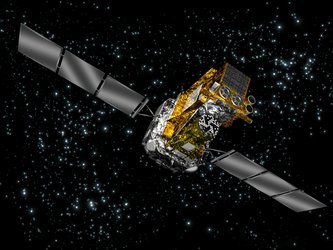
ESA's gamma-ray astronomy mission
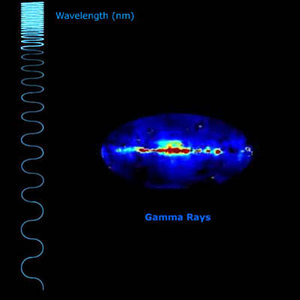
The electromagnetic spectrum
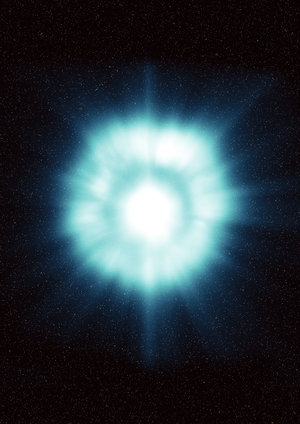
Seeing in gamma-ray wavelengths

NASA’s Guide to Visiting a Gamma-Ray Burst
- Released Thursday, June 1, 2023
- Visualizations by:
- Krystofer Kim
Our intrepid Traveler has decided to visit a gamma-ray burst for their next vacation. If you’d like to follow their adventure, check out this video for tips and tricks.Credit: NASA's Goddard Space Flight CenterMusic: "Wanna Be Hipster" from Universal Production MusicWatch this video on the NASA Goddard YouTube channel.Complete transcript available.
- 14355_Traveler_GRB_1080.mp4 (1920x1080) [147.4 MB]
- 14355_Traveler_GRB_sub100.mp4 (1920x1080) [92.0 MB]
- 14355_Traveler_GRB_1080.webm (1920x1080) [30.2 MB]
- 14355_Traveler_GRB_ProRes_3840x2160_12.mov (3840x2160) [5.7 GB]
- 14355_Traveler_GRB_4k.mp4 (3840x2160) [679.8 MB]
- 14355_Traveler_GRB_Captions_SRT.en_US.srt [4.9 KB]
- 14355_Traveler_GRB_Captions_SRT.en_US.vtt [4.7 KB]
- 14355_Traveler_GRB_YT_Still.jpg (1920x1080) [226.8 KB]
- 14355_Traveler_GRB_YT_Still_searchweb.png (180x320) [63.6 KB]
- 14355_Traveler_GRB_YT_Still_thm.png (80x40) [7.0 KB]
Complete transcript available.
Are you looking for a new vacation spot? Perhaps one with spectacular fireworks? While gamma-ray bursts produce brilliant displays of light across the entire spectrum, we cannot recommend visiting one. Before making up your mind, watch this handy video to learn more about what gamma-ray bursts are, how to find them, and safety considerations for watching one.
- MathMeme.gif (540x303) [1.3 MB]
Math is cool
- ShortGRB.gif (650x366) [2.6 MB]
Short gamma-ray burst
- LongGRB.gif (650x366) [2.1 MB]
Long gamma-ray burst
- EarthAtmosphere_GammaRayProtection.gif (650x366) [2.6 MB]
Earth’s atmosphere protects us from gamma rays
- GammaRaySatellites.gif (650x366) [3.9 MB]
Satellites watch for gamma-ray bursts
- ItsBeautiful_Reaction.gif (720x405) [1.4 MB]
It’s beautiful!
- ItsBeenMillionYears.gif (960x717) [2.1 MB]
It’s been a million years
- GRBWallpaper_LongGRB_Desktop.png (1920x1080) [448.0 KB]
- GRBWallpapers_LongGRB_Mobile.png (1080x1920) [557.5 KB]
Wallpaper: Long GRB
- GRBWallpaper_ShortGRB_Desktop.png (1920x1080) [363.6 KB]
- GRBWallpapers_ShortGRB_Mobile.png (1080x1920) [389.9 KB]
Wallpaper: Short GRB
- GRBWallpaper_GRBJet_Desktop.png (1920x1080) [602.9 KB]
- GRBWallpapers_GRBJetWithRocket_Mobile.png (1080x1920) [413.9 KB]
Gamma-ray burst jet
- Astrophysics
- Gamma Ray Burst
- Neutron Star
Please give credit for this item to: NASA's Goddard Space Flight Center
- Scott Wiessinger (KBR Wyle Services, LLC)
- Barb Mattson (University of Maryland College Park)
- Krystofer Kim (KBR Wyle Services, LLC)
- Chris Smith (KBR Wyle Services, LLC)
- Paul Morris (KBR Wyle Services, LLC)
Release date
This page was originally published on Thursday, June 1, 2023. This page was last updated on Wednesday, May 31, 2023 at 7:55 AM EDT.
- Astrophysics Features
- Narrated Movies
Snap It! An Eclipse Photo Adventure (Trailer)
Nasa's field guide to black holes, nasa's guide to near-light-speed travel, nasa's guide to black hole safety, you may also like..., no results., an error occurred. please reload this page and try again..
share this!
April 22, 2024
This article has been reviewed according to Science X's editorial process and policies . Editors have highlighted the following attributes while ensuring the content's credibility:
fact-checked
peer-reviewed publication
trusted source
Astrophysics research advances understanding of how gamma-ray bursts produce light
by Russ Nelson, University of Alabama in Huntsville
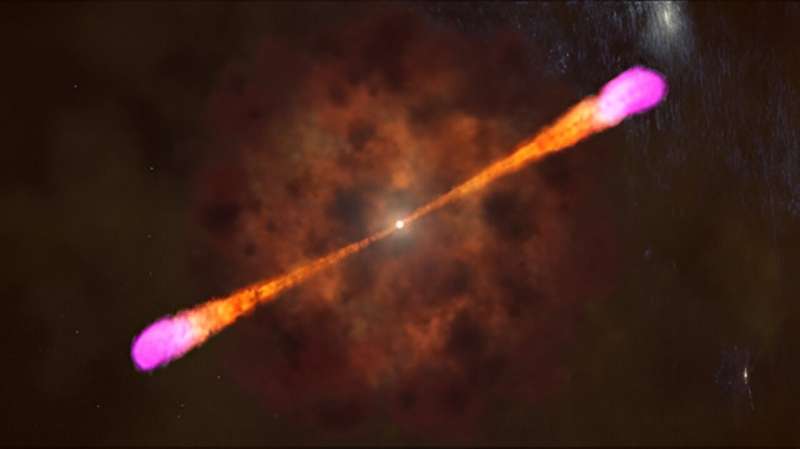
Gamma-ray bursts (GRBs) are intense bursts of gamma radiation, typically generating more energy in a few seconds than the sun will produce over its ten-billion-year lifetime. These transient phenomena present one of the most challenging puzzles in astrophysics, dating back to their accidental discovery in 1967 by a nuclear surveillance satellite.
Dr. Jon Hakkila, a researcher from The University of Alabama in Huntsville (UAH), a part of the University of Alabama System, is lead author on a paper in The Astrophysical Journal that promises to shed light on the behavior of these mysterious cosmic powerhouses by focusing on the motion of the jets where these forces originate. The paper is co-authored by UAH alumnus Dr. Timothy Giblin, Dr. Robert Preece and Dr. Geoffrey Pendleton of deciBel Research, Inc.
"Despite being studied for over fifty years, the mechanisms by which GRBs produce light are still unknown, a great mystery of modern astrophysics," Hakkila explains. "Understanding GRBs helps us understand some of the most rapid and powerful light-producing mechanisms that Nature employs. GRBs are so bright, they can be seen over the breadth of the universe, and—because light travels at a finite velocity—they allow us to see back to the earliest times that stars existed."
One reason for the mystery is the inability of theoretical models to provide consistent explanations of GRB characteristics for their light-curve behaviors. In astronomy, a light curve is a graph of the light intensity of a celestial object as a function of time. Studying light curves can yield significant information about the physical processes that produce them, as well as help define the theories about them. No two GRB light curves are identical, and the duration of emission can vary from milliseconds to tens of minutes as a series of energetic pulses.
"Pulses are the basic units of GRB emission," Hakkila says. "They indicate times when a GRB brightens and subsequently fades away. During the time a GRB pulse emits, it undergoes brightness variations that can sometimes occur on very short timescales. The strange thing about these variations is that they are reversible in the same way words like 'rotator' or 'kayak' (palindromes) are reversible.
"It is very hard to understand how this can happen, since time moves in only one direction. The mechanism that produces light in a GRB pulse somehow produces a brightness pattern, then subsequently generates this same pattern in reverse order. That is pretty weird, and it makes GRBs unique."
GRB emission is generally assumed to occur within relativistic jets —powerful streams of radiation and particles—launched from newly-formed black holes.
"In these models, the core of a dying massive star collapses to form a black hole, and material falling into the black hole is torn apart and redirected outward along two opposing beams, or jets," Hakkila notes. "The jet material pointing in our direction is ejected outward at nearly the speed of light. Since the GRB is relatively short-lived, it has always been assumed that the jet remains pointing at us throughout the event. But the time-reversed pulse characteristics have been very hard to explain if they originate from within a nonmoving jet."
To help demystify these characteristics, the paper proposes adding motion to the jet.
"The idea of a laterally-moving jet provides a simple solution by which time-reversed GRB pulse structure can be explained," the researcher says. "As the jet crosses the line-of-sight, an observer will see light produced first by one side of the jet, then the jet center, and finally the other side of the jet. The jet will brighten and then get fainter as the jet center crosses the line-of-sight, and radially-symmetric structure around the jet's core will be seen in reverse order as the jet gets fainter."
The rapid expansion of gamma-ray burst jets, coupled with the motion of the jet's "nozzle" relative to an observer, works to help illuminate the structure of GRB jets.
"Jets must spray material similar to the way a fire hose sprays water," Hakkila says. "The jet behaves more like a fluid than a solid object, and an observer who could see the entire jet would see it as being curved rather than straight. The motion of the nozzle causes light from different parts of the jet to reach us at different times, and this can be used to better understand the mechanism by which the jet produces light, as well as a laboratory for studying the effects of special relativity."
Journal information: Astrophysical Journal
Provided by University of Alabama in Huntsville
Explore further
Feedback to editors

Scientists discover method to prevent coalescence in immiscible liquids
12 minutes ago

Recently discovered black hole is part of a nearby disrupted star cluster, study finds
20 minutes ago

Demonstration of heralded three-photon entanglement on a photonic chip
2 hours ago

Ancient giant tortoise fossils found in Colombian Andes
5 hours ago

Emperor penguins perish as ice melts to new lows: Study

Artificial intelligence helps scientists engineer plants to fight climate change
16 hours ago

Ultrasensitive photonic crystal detects single particles down to 50 nanometers
17 hours ago

Scientists map soil RNA to fungal genomes to understand forest ecosystems

Researchers show it's possible to teach old magnetic cilia new tricks

Mantle heat may have boosted Earth's crust 3 billion years ago
Relevant physicsforums posts, 'devil' comet visible tonight 21.04.24.
58 minutes ago
Waves in space
Solar activity and space weather update thread.
14 hours ago
Our Beautiful Universe - Photos and Videos
Documenting the setup of my new telescope.
22 hours ago
What did I capture?
Apr 23, 2024
More from Astronomy and Astrophysics
Related Stories

New research looks at gamma-ray bursts
Sep 23, 2019

Citizen science project classifying gamma-ray bursts
Apr 16, 2024

A cosmic 'speed camera' just revealed the staggering speed of neutron star jets in a world first
Mar 30, 2024

A gamma ray burst lasted so long it triggered a satellite twice
Jul 27, 2023

New astrophysics model sheds light on additional source of long gamma-ray bursts
Nov 29, 2023

Falling stardust, wobbly jets explain blinking gamma ray bursts
Jun 29, 2022
Recommended for you


International team detects eruption of mega-magnetic star in nearby galaxy

Black hole 'traffic jams' discovered in galactic centers by astronomers

New evidence found for Planet 9

Observations explore globular cluster system in the galaxy NGC 4262

Star bars show universe's early galaxies evolved much faster than previously thought
Let us know if there is a problem with our content.
Use this form if you have come across a typo, inaccuracy or would like to send an edit request for the content on this page. For general inquiries, please use our contact form . For general feedback, use the public comments section below (please adhere to guidelines ).
Please select the most appropriate category to facilitate processing of your request
Thank you for taking time to provide your feedback to the editors.
Your feedback is important to us. However, we do not guarantee individual replies due to the high volume of messages.
E-mail the story
Your email address is used only to let the recipient know who sent the email. Neither your address nor the recipient's address will be used for any other purpose. The information you enter will appear in your e-mail message and is not retained by Phys.org in any form.
Newsletter sign up
Get weekly and/or daily updates delivered to your inbox. You can unsubscribe at any time and we'll never share your details to third parties.
More information Privacy policy
Donate and enjoy an ad-free experience
We keep our content available to everyone. Consider supporting Science X's mission by getting a premium account.
E-mail newsletter
Brightest gamma-ray burst of all time came from the collapse of a massive star
- Weinberg College
In October 2022, an international team of researchers, including Northwestern University astrophysicists, observed the brightest gamma-ray burst (GRB) ever recorded, GRB 221009A .
Now, a Northwestern-led team has confirmed that the phenomenon responsible for the historic burst — dubbed the B.O.A.T. (“brightest of all time”) — is the collapse and subsequent explosion of a massive star. The team discovered the explosion, or supernova, using NASA’s James Webb Space Telescope (JWST).
While this discovery solves one mystery, another mystery deepens.
The researchers speculated that evidence of heavy elements, such as platinum and gold, might reside within the newly uncovered supernova. The extensive search, however, did not find the signature that accompanies such elements. The origin of heavy elements in the universe continues to remain as one of astronomy’s biggest open questions.
The research was published today (April 12) in the journal Nature Astronomy.
“When we confirmed that the GRB was generated by the collapse of a massive star, that gave us the opportunity to test a hypothesis for how some of the heaviest elements in the universe are formed,” said Northwestern’s Peter Blanchard , who led the study. “We did not see signatures of these heavy elements, suggesting that extremely energetic GRBs like the B.O.A.T. do not produce these elements. That doesn’t mean that all GRBs do not produce them, but it’s a key piece of information as we continue to understand where these heavy elements come from. Future observations with JWST will determine if the B.O.A.T.’s ‘normal’ cousins produce these elements.”
Blanchard is a postdoctoral fellow at Northwestern’s Center for Interdisciplinary Exploration and Research in Astrophysics (CIERA), where he studies superluminous supernovae and GRBs. The study includes co-authors from the Center for Astrophysics | Harvard & Smithsonian; University of Utah; Penn State; University of California, Berkeley; Radbound University in the Netherlands; Space Telescope Science Institute; University of Arizona/Steward Observatory; University of California, Santa Barbara; Columbia University; Flatiron Institute; University of Greifswald and the University of Guelph.
“This event is particularly exciting because some had hypothesized that a luminous gamma-ray burst like the B.O.A.T. could make a lot of heavy elements like gold and platinum,” said second author Ashley Villar of Harvard University and the Center for Astrophysics | Harvard & Smithsonian. “If they were correct, the B.O.A.T. should have been a goldmine. It is really striking that we didn’t see any evidence for these heavy elements.”
Birth of the B.O.A.T.
When its light washed over Earth on Oct. 9, 2022, the B.O.A.T. was so bright that it saturated most of the world’s gamma-ray detectors. The powerful explosion occurred approximately 2 billion light-years away from Earth, in the direction of the constellation Sagitta and lasted a few hundred seconds in duration. As astronomers scrambled to observe the origin of this incredibly bright phenomenon, they were immediately hit with a sense of awe.
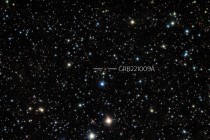
Brightest-ever gamma-ray burst breaks records
“As long as we have been able to detect GRBs, there is no question that this GRB is the brightest we have ever witnessed by a factor of 10 or more,” Wen-fai Fong , an associate professor of physics and astronomy at Northwestern’s Weinberg College of Arts and Sciences and member of CIERA, said at the time.
“The event produced some of the highest-energy photons ever recorded by satellites designed to detect gamma rays,” Blanchard said. “This was an event that Earth sees only once every 10,000 years . We are fortunate to live in a time when we have the technology to detect these bursts happening across the universe. It’s so exciting to observe such a rare astronomical phenomenon as the B.O.A.T. and work to understand the physics behind this exceptional event.”
A ‘normal’ supernova
Rather than observe the event immediately, Blanchard, Villar and their team wanted to view the GRB during its later phases. About six months after the GRB was initially detected, Blanchard and Villar used the JWST to examine its aftermath.
“The GRB was so bright that it obscured any potential supernova signature in the first weeks and months after the burst,” Blanchard said. “At these times, the so-called afterglow of the GRB was like the headlights of a car coming straight at you, preventing you from seeing the car itself. So, we had to wait for it to fade significantly to give us a chance of seeing the supernova.”
“We were lucky that JWST had just launched and could conduct these observations,” Villar said. “The Milky Way happened to be sitting in front of the B.O.A.T., and its dust blocked all the blue light we would normally see. JWST can peer right through this dust and give us a really incredible look in the infrared.”
The team used the JWST’s Near Infrared Spectrograph to discover the characteristic signature of elements like calcium and oxygen typically found within a supernova. Surprisingly, it wasn’t exceptionally bright — like the incredibly bright GRB that it accompanied.
“It’s not any brighter than previous supernovae,” Blanchard said. “It looks fairly normal in the context of other supernovae associated with less energetic GRBs. You might expect that the same collapsing star producing a very energetic and bright GRB would also produce a very energetic and bright supernova. But it turns out that's not the case. We have this extremely luminous GRB, but a normal supernova.”
Missing: Heavy elements
After confirming — for the first time — the presence of the supernova, Blanchard and his collaborators then searched for evidence of heavy elements within it. Currently, astrophysicists have an incomplete picture of all the mechanisms in the universe that can produce elements heavier than iron.
The primary mechanism for producing heavy elements, the rapid neutron capture process, requires a high concentration of neutrons. So far, astrophysicists have only confirmed the production of heavy elements via this process in the merger of two neutron stars, a collision detected by the Laser Interferometer Gravitational-Wave Observatory (LIGO) in 2017. But scientists say there must be other ways to produce these elusive materials. There are simply too many heavy elements in the universe and too few neutron-star mergers.
“There is likely another source,” Blanchard said. “It takes a very long time for binary neutron stars to merge. Two stars in a binary system first have to explode to leave behind neutron stars. Then, it can take billions and billions of years for the two neutron stars to slowly get closer and closer and finally merge. But observations of very old stars indicate that parts of the universe were enriched with heavy metals before most binary neutron stars would have had time to merge. That’s pointing us to an alternative channel.”
Astrophysicists have hypothesized that heavy elements also might be produced by the collapse of a rapidly spinning, massive star — the exact type of star that generated the B.O.A.T. Using the infrared spectrum obtained by the JWST, Blanchard studied the inner layers of the supernova, where the heavy elements should be formed.
“The exploded material of the star is opaque at early times, so you can only see the outer layers,” Blanchard said. “But once it expands and cools, it becomes transparent. Then you can see the photons coming from the inner layer of the supernova.”
“Moreover, different elements absorb and emit photons at different wavelengths, depending on their atomic structure, giving each element a unique spectral signature,” Blanchard explained. “Therefore, looking at an object’s spectrum can tell us what elements are present. Upon examining the B.O.A.T.’s spectrum, we did not see any signature of heavy elements, suggesting extreme events like GRB 221009A are not primary sources. This is crucial information as we continue to try to pin down where the heaviest elements are formed.”
Why so bright?
To tease apart the light of the supernova from that of the bright afterglow that came before it, the researchers paired the JWST data with observations from the Atacama Large Millimeter/Submillimeter Array (ALMA) in Chile.
“Even several months after the burst was discovered, the afterglow was bright enough to contribute a lot of light in the JWST spectra,” said Tanmoy Laskar , an assistant professor of physics and astronomy at the University of Utah and a co-author on the study. “Combining data from the two telescopes helped us measure exactly how bright the afterglow was at the time of our JWST observations and allow us to carefully extract the spectrum of the supernova.”
Although astrophysicists have yet to uncover how a “normal” supernova and a record-breaking GRB were produced by the same collapsed star, Laskar said it might be related to the shape and structure of the relativistic jets . When rapidly spinning, massive stars collapse into black holes, they produce jets of material that launch at rates close to the speed of light. If these jets are narrow, they produce a more focused — and brighter — beam of light.
“It’s like focusing a flashlight’s beam into a narrow column, as opposed to a broad beam that washes across a whole wall,” Laskar said. “In fact, this was one of the narrowest jets seen for a gamma-ray burst so far, which gives us a hint as to why the afterglow appeared as bright as it did. There may be other factors responsible as well, a question that researchers will be studying for years to come.”
Additional clues also may come from future studies of the galaxy in which the B.O.A.T. occurred. “In addition to a spectrum of the B.O.A.T. itself, we also obtained a spectrum of its ‘host’ galaxy,” Blanchard said. “The spectrum shows signs of star formation, hinting that the birth environment of the original star may be different than previous events.”
Team member Yijia Li, a graduate student at Penn State, modeled the spectrum of the galaxy, finding that the B.O.A.T.’s host galaxy has the lowest metallicity, a measure of the abundance of elements heavier than hydrogen and helium, of all previous GRB host galaxies.
“This is another unique aspect of the B.O.A.T. that may help explain its properties,” Li said. “The energy released in the B.O.A.T. was completely off the charts, one of the most energetic events humans have ever seen. The fact that it also appears to be born out of near-primordial gas may be an important clue to understanding its superlative properties.”
The study, “JWST detection of a supernova associated with GRB 221009A without an r-process signature,” was supported by NASA (award number JWST-GO-2784) and the National Science Foundation (award numbers AST-2108676 and AST-2002577). This work is based on observations made with the NASA/ESA/CSA James Webb Space Telescope.
Editor’s Picks

Redevelopment of Norris University Center’s East Lawn to begin this summer
‘the night watchman’ named next one book selection, six northwestern faculty named 2024 guggenheim fellows, related stories.
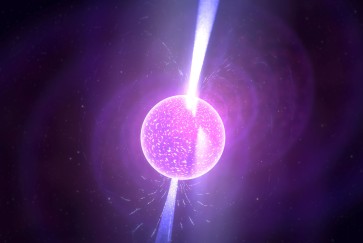
First gravitational-wave detection of a mass-gap object merging with a neutron star
Stellar collisions produce strange, zombie-like survivors, on campus for the eclipse here’s what to know.
NASA Missions Probe What May Be a 1-In-10,000-Year Gamma-ray Burst
- Released Tuesday, March 28, 2023
- Written by:
- Francis Reddy
- GRB_WFC3IR1108+1204_circled.gif (512x512) [3.5 MB]
Credit: NASA, ESA, CSA, STScI, A. Levan (Radboud University); Image Processing: Gladys Kober
On Tuesday, March 28, 2023, astronomers meeting at the High Energy Astrophysics Division meeting of the American Astronomical Society in Waikoloa, Hawaii, presented new findings about the BOAT – the brightest of all time gamma-ray burst that erupted in October 2022. Gamma-ray bursts are the most powerful class of explosions in the universe. The BOAT triggered detectors on numerous spacecraft, and observatories around the globe followed up. Observations of the burst span the spectrum, from radio waves to gamma rays, and include data from many NASA and partner missions, including the NICER X-ray telescope on the International Space Station, NASA’s NuSTAR observatory, and even Voyager 1 in interstellar space. The signal from GRB 221009A had been traveling for about 1.9 billion years before it reached Earth, making it among the closest-known “long” GRBs, whose initial, or prompt, emission lasts more than two seconds. Astronomers think these bursts represent the birth cries of black holes that formed when the cores of massive stars collapsed under their own weight. As it quickly ingests the surrounding matter, the black hole blasts out jets in opposite directions containing particles accelerated to near the speed of light. These jets pierce through the star, emitting X-rays and gamma rays as they stream into space. NASA's James Webb and Hubble space telescopes searched for the supernova usually found after long bursts, so far to no avail. Observations will continue, but astronomers say it's possible the entire star was swallowed up by the black hole instead of exploding. The burst is among the closest long GRBs. The jets themselves were not unusually powerful, but they were exceptionally narrow – much like the jet setting of a garden hose – and one was pointed directly at us. The closer to head-on we view a jet, the brighter it appears. The burst also enabled astronomers to probe distant dust clouds in our own galaxy. As the prompt X-rays traveled toward us, some of them reflected off of dust layers, creating extended “light echoes” of the initial blast in the form of X-ray rings expanding from the burst’s location. The X-ray Telescope on NASA’s Neil Gehrels Swift Observatory discovered the presence of a series of echoes. Detailed follow-up by ESA’s (the European Space Agency’s) XMM-Newton telescope, together with Swift data, revealed these extraordinary rings were produced by 21 distinct dust clouds. Astronomers may be able to study the afterglow of this astonishing GRB for years to come.
- GRB_WFC3IR_mstr_crop_FINAL_circled_1080.jpg (975x1080) [1.2 MB]
- GRB_WFC3IR_mstr_crop_FINAL_circled_2160.jpg (1950x2160) [3.0 MB]
- GRB_WFC3IR_mstr_crop_FINAL_no_annotations_1080.jpg (975x1080) [1.3 MB]
- GRB_WFC3IR_mstr_crop_FINAL_no_annotations_2160.jpg (1950x2160) [3.0 MB]
- GRB_WFC3IR1108+1204.gif (512x512) [3.5 MB]
- GRB_WFC3IR_mstr_crop_FINAL_no_annotations_1080.tif (975x1080) [6.1 MB]
- GRB_WFC3IR_mstr_crop_FINAL_no_annotations_2160.tif (1950x2160) [24.1 MB]
Unannotated versions of the Hubble Space Telescope’s Wide Field Camera 3 afterglow image (GIF, JPEGs, and TIF).
Gamma-ray bursts are the most luminous explosions in the cosmos. Astronomers think most occur when the core of a massive star runs out of nuclear fuel, collapses under its own weight, and forms a black hole, as illustrated in this animation. The black hole then drives jets of particles that drill all the way through the collapsing star at nearly the speed of light. These jets pierce through the star, emitting X-rays and gamma rays (magenta) as they stream into space. They then plow into material surrounding the doomed star and produce a multiwavelength afterglow that gradually fades away. The closer to head-on we view one of these jets, the brighter it appears. Credit: NASA's Goddard Space Flight CenterFind 4k master copies here.
- Gamma-ray_Burst_Animation_MkII_1080.mp4 (1920x1080) [90.6 MB]
- Gamma-ray_Burst_Animation_MkII_1080.webm (1920x1080) [6.0 MB]
- Gamma-ray_Burst_Animation_MkII_1080.01200_print.jpg (1024x576) [74.4 KB]
Find 4k master copies here.
- 221009A_and_friends_v2.gif (770x470) [5.7 MB]
Credit: Adam Goldstein, USRA
- GRB_all_rings_XMM_1080.jpg (1080x1080) [1.6 MB]
- GRB_all_rings_XMM_2160.jpg (2160x2160) [4.7 MB]
- GRB_all_rings_XMM_2500.jpg (2500x2500) [5.9 MB]
- GRB_all_rings_XMM_2160_searchweb.png (320x180) [106.8 KB]
- GRB_all_rings_XMM_2160_thm.png (80x40) [6.9 KB]
- Swift_rings_221009A_labels_1080.gif (1080x1080) [4.8 MB]
- Swift_rings_221009A_labels_512.gif (512x512) [2.2 MB]
- Swift_rings_221009A_no_labels_1080.gif (1080x1080) [4.8 MB]
- Swift_rings_221009A_no_labels_512.gif (512x512) [2.1 MB]
The BOAT burst enabled astronomers to probe distant dust clouds in our own galaxy. As the X-rays from the initial blast traveled toward us, some of them reflected off of dust layers, creating extended “light echoes” in the form of X-ray rings expanding from the burst’s location. This animation shows how it happens. The scattered X-rays travel to us with a slight delay. As seen from Earth, we first see the burst followed by the expanding rings. How dust clouds scatter X-rays depends on their distances, the sizes of their dust grains, and the X-ray energies involved. Credit: NASA’s Goddard Space Flight Center
- Oct_9_GRB_Bubble_Final_1080_12fps.mp4 (1920x1080) [10.0 MB]
- Oct_9_GRB_Bubble_Final_1080_12fps.webm (1920x1080) [1.8 MB]
- Oct_9_GRB_Bubble_Final_ProRes_3840x2160_5994.mov (3840x2160) [2.1 GB]
- Oct_9_GRB_Bubble_Final.gif (1200x675) [8.1 MB]
Credit: NASA’s Goddard Space Flight Center
- GRB_location_and_sightline_1080.jpg (1920x1080) [612.9 KB]
- GRB_location_sightline.gif (1200x675) [2.6 MB]
- GRB_location_sightline_no_loop.gif (1387x780) [6.1 MB]
- GRB_location_and_sightline_2160.jpg (3840x2160) [2.0 MB]
Credit: NASA's Goddard Space Flight Center
- grb_position_from_Earth.gif (1200x675) [1.2 MB]
- grb_position_from_Earth_marker_only_1080.jpg (1920x1080) [954.3 KB]
- grb_position_from_Earth_marker_only_2160.jpg (3840x2160) [2.5 MB]
- grb_position_from_Earth_Sagitta_outline_1080.jpg (1920x1080) [978.5 KB]
- grb_position_from_Earth_Sagitta_outline_2160.jpg (3840x2160) [2.6 MB]
- Dust_rings_in_Milky_Way_plan_side_1080.jpg (1079x1080) [1.1 MB]
- Dust_rings_in_Milky_Way_plan_side_2160.jpg (2157x2160) [3.6 MB]
- Dust_rings_in_Milky_Way_plan_side_1080_no_labels.jpg (1079x1080) [1.0 MB]
- Dust_rings_in_Milky_Way_plan_side_2160_no_labels.jpg (2157x2160) [3.4 MB]
Polarization measures the organization of electromagnetic radiation, that is, how well the light waves line up. When fast-moving charged particles spiral along magnetic fields, as shown in this animation, they produce highly organized light called synchrotron radiation. Exploring the polarization of gamma-ray bursts allows astronomers to probe the geometry of magnetic fields within the jets of gamma-ray bursts, providing information about what mechanism close to their black holes generated them. Credit: NASA’s Goddard Space Flight Center
- Synchrotron_Polarization_Final_1080_12fps.mp4 (1920x1080) [7.4 MB]
- Synchrotron_Polarization_Final_1080_12fps.webm (1920x1080) [1.5 MB]
- Synchrotron_Polarization_Final_ProRes_3840x2160_5994.mov (3840x2160) [528.8 MB]
- Synchrotron_Polarization_Final.gif (1920x1080) [4.3 MB]
- V1_burst.gif (1080x1080) [1.5 MB]
Credit: NASA's Eyes on the Solar System
- Gaia_burst.gif (1080x1080) [2.9 MB]
- Fermi_Swift_burst.gif (1080x1080) [4.3 MB]
- ACE_Wind.gif (1080x1080) [2.5 MB]
Caption: NASA's Goddard Space Flight Center
- Mars_burst.gif (1080x1080) [4.1 MB]
For More Information
See NASA.gov
- Astrophysics
- Gamma Ray Burst
- Hubble Space Telescope
- XMM-Newton observatory
Please give credit for this item to: NASA's Goddard Space Flight Center. However, individual items should be credited as indicated above.
Science writer
- Francis Reddy (University of Maryland College Park)
- Scott Wiessinger (KBR Wyle Services, LLC)
- Brad Cenko (NASA/GSFC)
- Eric Burns (Louisiana State University)
Release date
This page was originally published on Tuesday, March 28, 2023. This page was last updated on Wednesday, May 3, 2023 at 11:43 AM EDT.
- Fermi Gamma-ray Space Telescope
- Astrophysics Animations
- Astrophysics Presentations
- Astrophysics Stills
Papers used in this visualization
Focus issue of The Astrophysical Journal Letters
ComPair Infographic
Nasa missions detect record-breaking burst, nasa's fermi spots 'fizzled' burst from collapsing star, fermi hyperwall--2016 aas, a walk through fermi science, briefing materials: nasa missions explore record-setting cosmic blast, nasa's fermi, swift see 'shockingly bright' gamma-ray burst, long gamma-ray burst, you may also like..., no results., an error occurred. please reload this page and try again..
Multiwavelength Astronomy

Gamma Ray Science, Dieter Hartmann
Gamma rays in space.
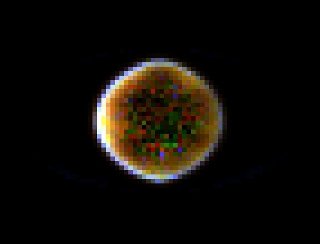
Gamma-ray Earth: This pixelated image depicts our own planet, Earth, as seen in 35 MeV gamma rays. This gives a different view of the Earth than is obtainable using visible light, which is composed of approximately 2 eV photons. The Earth's gamma-ray glow is indeed very faint, and this image was constructed by combining data from seven years of exposure during the life of the Compton Gamma Ray Observatory, operating in Earth orbit from 1991 to 2000. Brightest near the edge and faint near the center, the picture indicates that the gamma rays are coming from high in Earth's atmosphere. The gamma rays are produced as the atmosphere interacts with high energy cosmic rays from space, blocking the harmful radiation from reaching the surface. Astronomers need to measure Earth's gamma-ray glow, as it can interfere with observations of cosmic gamma-ray sources like pulsars, supernova remnants, and distant active galaxies powered by supermassive black holes. Credit: Dirk Petry (GLAST Science Support Center), EUD, EGRET, NASA)
We’ve known about gamma-ray bursts from space since 1967, from data collected by the Vela military satellites. Vela’s mission was to look for nuclear explosions in the atmosphere or in space from behind the Moon. Scientists were aware of a high energy radiation background, but Vela was looking for sudden bursts of such radiation that might indicate that a nuclear bomb had been detonated.
I have witnessed almost all of the history of this science story. By the time I came to Santa Cruz, in 1983, it was only 10 years after their discovery. When I joined the field, people like Stan Woosley and Stirling Colgate were the leading experts on the hypothetical sources of gamma-ray bursts. We thought they were in the Galaxy , and they were probably related to neutron stars . This is quite a long time ago. In the meantime we’ve learned they are of cosmological origin and we understand now that the long duration bursts are related to supernovae, albeit a special sub-class.
Gamma Ray > Science, Dieter Hartmann
This material is based upon work supported by NASA under Grant Nos. NNX09AD33G and NNX10AE80G issued through the SMD ROSES 2009 Program.
Any opinions, findings, and conclusions or recommendations expressed in this website are those of the author(s) and do not necessarily reflect the views of the National Aeronautics and Space Administration.
A Dead Star in a Nearby Galaxy Just Did Something Wild
A massive star in M82 lived fast, died young, and left an extremely magnetic corpse.
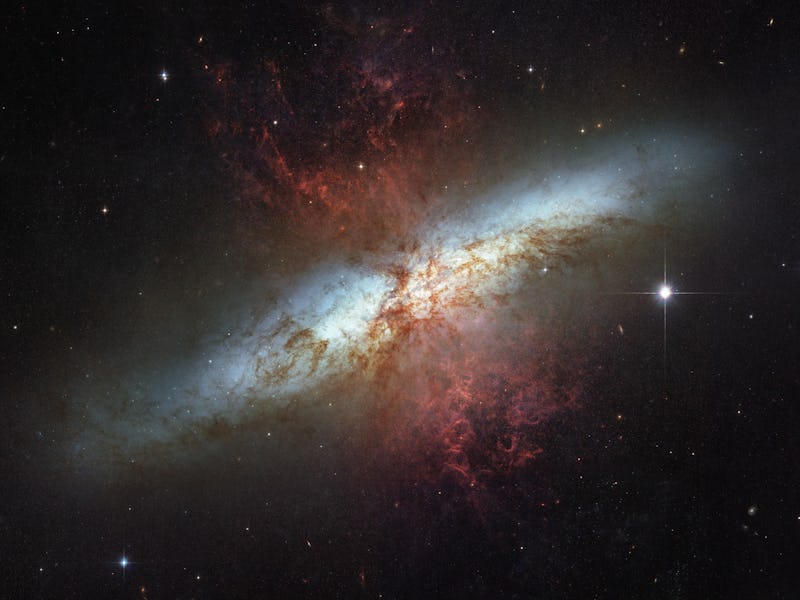
Astronomers just caught a dead star in a distant galaxy throwing a massive temper tantrum.
A magnetar in galaxy M82 recently sent a huge burst of gamma rays and other radiation blasting out into space. Magnetars are the burned-out, collapsed cores of massive stars, wrapped in the strongest magnetic fields in the universe. And sometimes, the restless shifting of those immensely powerful magnetic fields releases a huge blast of energy: a giant flare, bright enough to be seen tens of millions of light-years away.
In the last 50 years, astronomers have seen one of these dramatic flares just three times, and never in another galaxy – until recently. Astrophysicist Sandro Mereghetti and his colleagues published their work in the journal Nature .
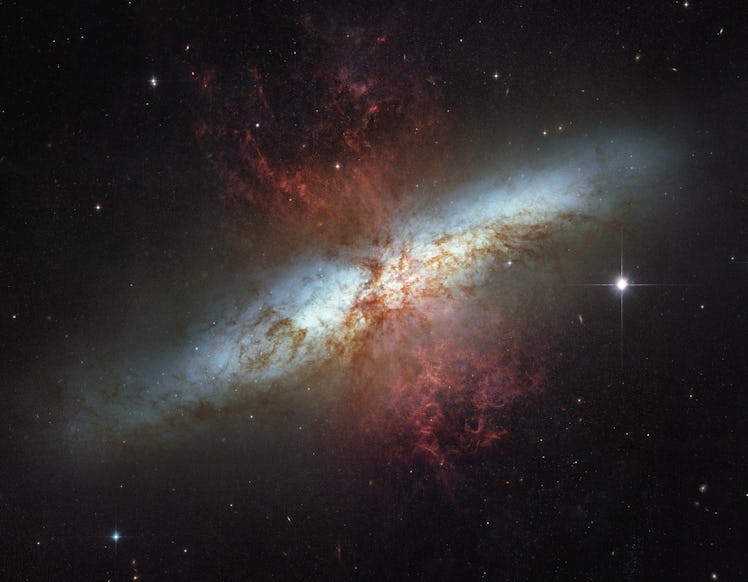
Astronomers expect magnetars to be more common in galaxies like M82, where massive stars are being born, and dying, at a tremendous rate.
It Came From a Starburst Galaxy
After 20 years of being woken in the middle of the night by news of a gamma ray burst (the brief, bright flash of gamma rays released when two neutron stars or black holes collide) these cosmic cataclysms are starting to seem routine, Mereghetti tells Inverse.
But the one ESA’s orbiting International Gamma Ray Astrophysics Laboratory (Integral) detected on the night of November 15, 2023 was different. For one thing, it came from a bright galaxy full of massive stars, just 12 million light years away — not the sort of place you usually find neutron star collisions; those tend to come from galaxies full of aging stars, billions of light years in the distance.
“I immediately noticed that the position was not a random position in the sky, but right in the center of a very bright galaxy, M82,” says Mereghetti. "This clearly was very exciting, and in a sense, unexpected. It opened the possibility that this could be something else, not a normal, boring GRB – but something more interesting for me, because my field is the study of magnetars.”
When a massive star burns up the last of fuel, it collapses onto its burned-out core. The force of that collapse triggers a cosmic explosion called a supernova, but it leaves behind a dense ball of matter, packed so tightly that there’s no room for atoms, only subatomic particles called neutrons. And sometimes, for reasons physicists don’t fully understand yet, one of these neutron stars forms with a tremendously powerful magnetic field, and a magnetar is born.
Exactly how and why that happens — and what comes next — are questions Mereghetti and his colleagues hope the recent magnetar flare in the M82 galaxy can help them answer.
Pinpointing a Giant Flare
Astrophysicists like Mereghetti already know that magnetars occasionally flare up dramatically, and they think it happens thanks to huge movements in the magnetar’s constantly shifting magnetic field. But these are rare events; just 3 have happened nearby in the last 50 years: twice in our galaxy and once in the nearby Large Magellanic Cloud (which is basically a suburb of our galaxy). Astronomers had never seen a giant flare from a magnetar in another galaxy. That’s mostly because it’s hard to tell the difference between an “ordinary” gamma ray burst and a flaring magnetar, unless you can very precisely pinpoint the source.
Integral’s high-resolution images allowed Mereghetti and his colleagues to do just that, and M82 — a bright spiral galaxy bursting with new star formation — looked like exactly the kind of place likely to host a restless magnetar.
The mid-November gamma ray burst also looked a little different from the kind that had long since become routine to Mereghetti. After the kind of cosmic collision that triggers a normal gamma-ray burst, the sky glows with x-rays and visible light for hours or days afterward, but this event left no afterglow in the sky. Instead, the astronomers just saw a short spike of bright gamma rays, lasting less than a second. That suggested the source wasn’t a neutron star collision, but an erupting magnetar.
And there was something missing: gravitational waves. When two dense, massive objects — like neutron stars or black holes — collide, they stir up ripples in the fabric of spacetime, which observatories like LIGO can measure when they eventually pass through our planet. But whatever caused the strange-looking gamma ray burst that November night, it didn’t stir up any gravitational waves: another clue pointing to a giant magnetar flare.

Magnetars have magnetic fields a thousand times stronger than an ordinary neutron star, and physicists aren’t sure why (according to NASA, that’s equivalent to several trillion fridge magnets).
The Wild Afterlives of Dead Stars
Now that they’ve seen a magnetar flaring in a (relatively) nearby galaxy, Mereghetti and his colleagues hope this will give them a chance to learn more about these bizarre objects and their even more bizarre behavior .
Magnetars don’t flare very often, and that means astronomers seldom get a chance to watch them in action.
“If you want to study the giant flares from our galaxy, we've seen just two of them. That means I have to wait another 50 years to study two more,” says Mereghetti. “Knowing that we can see them also in external galaxies will allow us to increase the number of flares that we observe. We cannot study them so well because they are further away, but we will have a larger number of them.”
Mereghetti hopes that more data from magnetar flares in other galaxies will help answer questions about exactly how and why these giant flares happen — and how magnetars form and eventually die. By understanding the weird behavior of these super-magnetic stellar corpses, astrophysicists hope to learn why some supernovae leave behind ordinary neutron stars, while others spawn magnetars, and still others leave pulsars: fast-spinning neutron stars that emit beams of x-rays from their poles, like cosmic lighthouses.
They also hope to learn what happens when a magnetar loses all the energy that powers its magnetic field, which happens, in part, through giant flares like this one.
“There are a few neutron stars in our galaxy that we see only in x-rays; they do not show flares, but they are particularly hot. And we believe that those are the descendant of magnetars; they are all the magnetars that lost all their magnetic energy,” says Mereghetti.
Mereghetti and his colleagues hope to link all these different kinds of neutron stars into an evolutionary chart of the afterlives of massive stars.
- Space Science

Suggested Searches
- Climate Change
- Expedition 64
- Mars perseverance
- SpaceX Crew-2
- International Space Station
- View All Topics A-Z
Humans in Space
Earth & climate, the solar system, the universe, aeronautics, learning resources, news & events.

NASA Wins 6 Webby Awards, 8 Webby People’s Voice Awards

NASA’s CloudSat Ends Mission Peering Into the Heart of Clouds

Hubble Celebrates 34th Anniversary with a Look at the Little Dumbbell Nebula
- Search All NASA Missions
- A to Z List of Missions
- Upcoming Launches and Landings
- Spaceships and Rockets
- Communicating with Missions
- James Webb Space Telescope
- Hubble Space Telescope
- Why Go to Space
- Astronauts Home
- Commercial Space
- Destinations
- Living in Space
- Explore Earth Science
- Earth, Our Planet
- Earth Science in Action
- Earth Multimedia
- Earth Science Researchers
- Pluto & Dwarf Planets
- Asteroids, Comets & Meteors
- The Kuiper Belt
- The Oort Cloud
- Skywatching
- The Search for Life in the Universe
- Black Holes
- The Big Bang
- Dark Energy & Dark Matter
- Earth Science
- Planetary Science
- Astrophysics & Space Science
- The Sun & Heliophysics
- Biological & Physical Sciences
- Lunar Science
- Citizen Science
- Astromaterials
- Aeronautics Research
- Human Space Travel Research
- Science in the Air
- NASA Aircraft
- Flight Innovation
- Supersonic Flight
- Air Traffic Solutions
- Green Aviation Tech
- Drones & You
- Technology Transfer & Spinoffs
- Space Travel Technology
- Technology Living in Space
- Manufacturing and Materials
- Science Instruments
- For Kids and Students
- For Educators
- For Colleges and Universities
- For Professionals
- Science for Everyone
- Requests for Exhibits, Artifacts, or Speakers
- STEM Engagement at NASA
- NASA's Impacts
- Centers and Facilities
- Directorates
- Organizations
- People of NASA
- Internships
- Our History
- Doing Business with NASA
- Get Involved
- Aeronáutica
- Ciencias Terrestres
- Sistema Solar
- All NASA News
- Video Series on NASA+
- Newsletters
- Social Media
- Media Resources
- Upcoming Launches & Landings
- Virtual Events
- Sounds and Ringtones
- Interactives
- STEM Multimedia

Sols 4166-4167: A Garden Full of Rocks

European Service Module

Gateway: Frequently Asked Questions

NASA Shares Lessons of Human Systems Integration with Industry

Work Underway on Large Cargo Landers for NASA’s Artemis Moon Missions

NASA Open Science Initiative Expands OpenET Across Amazon Basin

Amendment 11: Physical Oceanography not solicited in ROSES-2024

NASA Data Helps Beavers Build Back Streams

Sols 4164-4165: What’s Around the Ridge-bend?

Sols 4161-4163: Double Contact Science

NASA’s Chandra Releases Doubleheader of Blockbuster Hits

Explore the Universe with the First E-Book from NASA’s Fermi

Dr. Douglas Hudgins

NASA Photographer Honored for Thrilling Inverted In-Flight Image

NASA’s Ingenuity Mars Helicopter Team Says Goodbye … for Now

NASA Langley Team to Study Weather During Eclipse Using Uncrewed Vehicles

NASA’s Near Space Network Enables PACE Climate Mission to ‘Phone Home’

Amendment 10: B.9 Heliophysics Low-Cost Access to Space Final Text and Proposal Due Date.

NASA STEM Artemis Moon Trees

NASA Glenn Joins Big Hoopla STEM Challenge

NASA Mentors, Students Rock FIRST Buckeye Regional

First NASA Mars Analog Crew Nears End of Mission

Diez maneras en que los estudiantes pueden prepararse para ser astronautas

Astronauta de la NASA Marcos Berríos

Resultados científicos revolucionarios en la estación espacial de 2023
Why space radiation matters.

What is Radiation?
What is space radiation, how much space radiation are astronauts exposed to, where does radiation come from, non-ionizing versus ionizing radiation, why is ionizing radiation more dangerous than non-ionizing radiation, what is galactic cosmic radiation, are we protected from space radiation on earth, what factors determine the amount of radiation astronauts receive, resources for further study:.
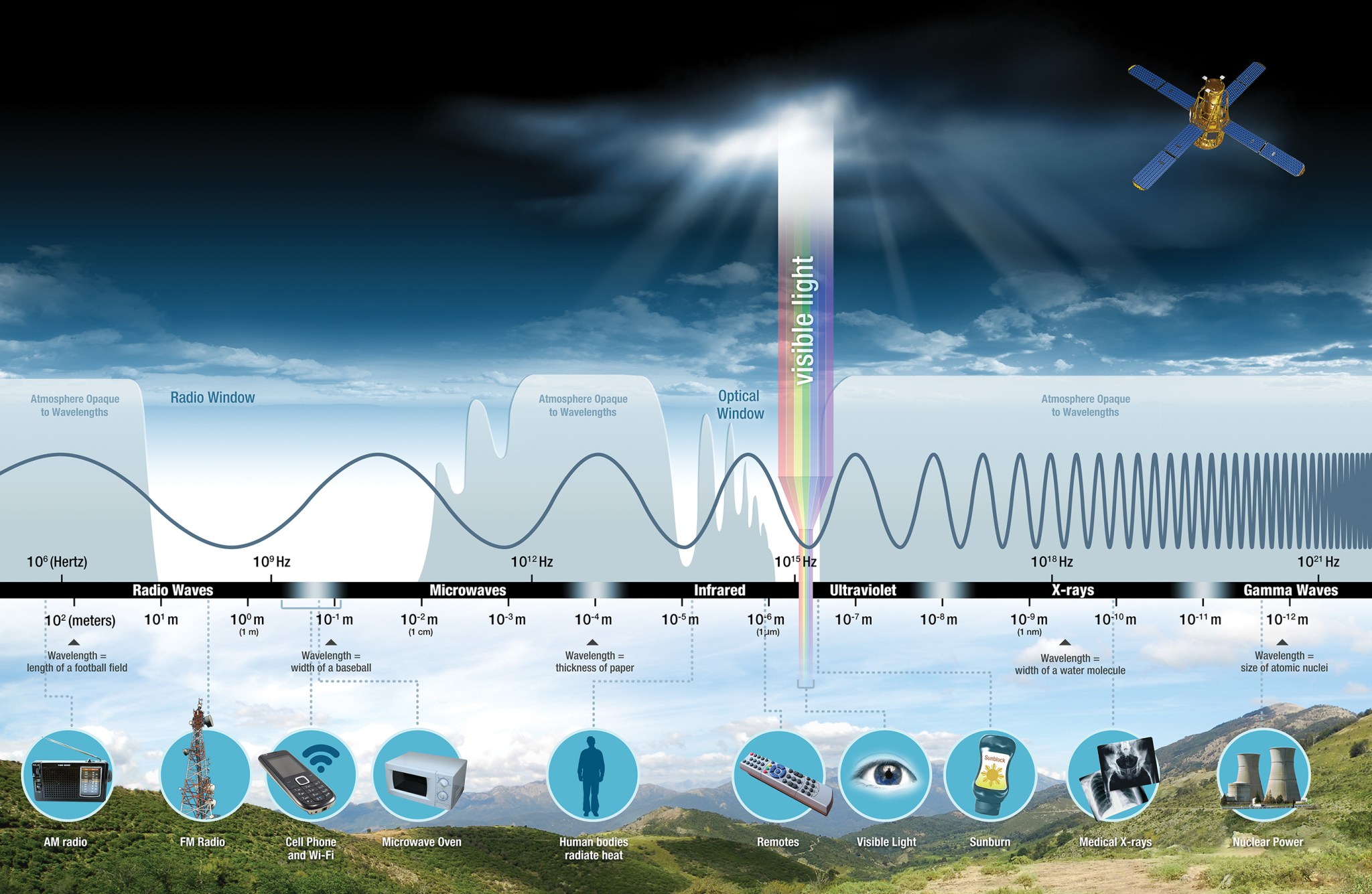
Outside the protective cocoon of the Earth’s atmosphere is a universe full of radiation – it is all around us. Say the word “radiation” to three different people, and you’ll probably get three different reactions. Your aunt may tell you how radiation destroyed her cancer. Your neighbor might mention the “duck and cover” procedures of his day. And your comics-loving friend will explain how gamma rays turned Bruce Banner into The Hulk. Radiation comes in many forms and is all around us, all the time. But what is radiation?
Radiation is a form of energy that is emitted in the form of rays, electromagnetic waves, and/or particles. In some cases, radiation can be seen (visible light) or felt (infrared radiation), while other forms—like x-rays and gamma rays—are not visible and can only be observed with special equipment. Although radiation can have negative effects both on biological and mechanical systems, it can also be carefully used to learn more about each of those systems.
Space radiation is different from the kinds of radiation we experience here on Earth. Space radiation is comprised of atoms in which electrons have been stripped away as the atom accelerated in interstellar space to speeds approaching the speed of light – eventually, only the nucleus of the atom remains.
Space radiation is made up of three kinds of radiation: particles trapped in the Earth’s magnetic field; particles shot into space during solar flares (solar particle events); and galactic cosmic rays, which are high-energy protons and heavy ions from outside our solar system. All of these kinds of space radiation represent ionizing radiation.
Beyond Low Earth Orbit, space radiation may place astronauts at significant risk for radiation sickness, and increased lifetime risk for cancer, central nervous system effects, and degenerative diseases. Research studies of exposure in various doses and strengths of radiation provide strong evidence that cancer and degenerative diseases are to be expected from exposures to galactic cosmic rays (GCR) or solar particle events (SPE).
Milli-Sievert (mSv) is a form of measurement used for radiation. Astronauts are exposed to ionizing radiation with effective doses in the range from 50 to 2,000 mSv. 1 mSv of ionizing radiation is equivalent to about three chest x-rays. So that’s like if you were to have 150 to 6,000 chest x-rays.
Radiation can be created by humans (microwaves, cell phones, radios, light bulbs, diagnostic medical applications such as x-rays) or naturally occurring (the Sun, radioactive elements in the Earth’s crust, radiation trapped in the Earth’s magnetic field, stars, and other astrophysical objects like quasars or galactic centers).
Earth’s biggest source of radiation is the Sun. The Sun emits all wavelengths in the electromagnetic spectrum (EM). The majority is in the form of visible, infrared, and ultraviolet radiation (UV). Occasionally, giant explosions, called solar flares, occur on the surface of the Sun and release massive amounts of energy out into space in the form of x-rays, gamma rays, and streams of protons and electrons. This is called a solar particle event (SPE). These solar flares can have serious consequences to astronauts and their equipment, even at locations that are far from the Sun.
Radiation can be either non-ionizing (low energy) or ionizing (high energy). Ionizing radiation consists of particles that have enough energy to completely removing an electron from its orbit, thus creating a more positively charged atom. Less energetic, non-ionizing radiation does not have enough energy to remove electrons from the material it crosses.
Examples of ionizing radiation include alpha particles (a helium atom nucleus moving at very high speeds), beta particles (a high-speed electron or positron), gamma rays, x-rays, and galactic cosmic radiation (GCR) from space. Examples of non-ionizing radiation include radio frequencies, microwaves, infrared, visible light, and ultraviolet (UV) light. While many forms of non-ionizing and ionizing radiation have become essential to our everyday life, each kind of radiation can cause damage to living and non-living objects, and precautions are required to prevent unnecessary risks.
While non-ionizing radiation is damaging, it can easily be shielded out of an environment as is done for UV radiation. Ionizing radiation, however, is much more difficult to avoid. Ionizing radiation has the ability to move through substances and alter them as it passes through. When this happens, it ionizes the atoms (knocks electrons out of them) in the surrounding material with which it interacts.
Ionizing radiation is like an atomic-scale cannonball that blasts through material, leaving significant damage behind. More damage can also be created by secondary particles that are propelled into motion by the primary radiation particle.
The particles associated with ionizing radiation in space are categorized into three main groups relating to the source of the radiation: galactic cosmic rays, solar flare particles, and radiation belt particles (Van Allen Belts) trapped in space around the Earth.
Galactic Cosmic Radiation (GCR) is a dominant source of radiation that must be dealt with aboard current spacecraft and future space missions within our solar system. GCR comes from outside the solar system but primarily from within our Milky Way galaxy. GCR is composed of the nuclei of atoms that have had their surrounding electrons stripped away and are traveling at nearly the speed of light. Another way to think of GCR would be to imagine the nucleus of any element in the periodic table from hydrogen to uranium. Now imagine that same nucleus moving at an incredibly high speed. The high-speed nucleus you are imagining is GCR. These particles were probably accelerated within the last few million years by magnetic fields of supernova remnants.
In summary, GCR are heavy, high-energy ions of elements that have had all their electrons stripped away as they journeyed through the galaxy at nearly the speed of light. They can cause atoms they pass through to ionize. They can pass practically unimpeded through a typical spacecraft or the skin of an astronaut.
Yes, but not entirely. Life on Earth is protected from the full impact of solar and cosmic radiation by the magnetic fields that surround the Earth and by the Earth’s atmosphere. The Earth also has radiation belts caused by its magnetic field. The inner radiation belt, or Van Allen Belt, consists of ionizing radiation in the form of very energetic protons—by-products of collisions between GCR and atoms of Earth’s atmosphere. The outer radiation belts contain protons and electrons. As we travel farther from Earth’s protective shields we are exposed to the full radiation spectrum and its damaging effects.
In addition to a protective atmosphere, we are also lucky that Earth has a magnetic field. It shields us from the full effects of the solar wind and GCR. Without this protection, Earth’s biosphere might not exist as it does today, or would at least be limited to the subsurface.
There are three main factors that determine the amount of radiation that astronauts receive or how radiation affects astronauts.
They include:
• Altitude above the Earth – at higher altitudes the Earth’s atmospheric protection is no longer present and the magnetic field is weaker, so there is less protection against ionizing particles, and spacecraft pass through the trapped radiation belts more often.
• Solar cycle – the Sun has an 11-year cycle, which culminates in a dramatic increase in the number and intensity of solar flares, especially during periods when there are numerous sunspots.
• Individual’s susceptibility – researchers are still working to determine what makes one person more susceptible to the effects of space radiation than another person. This is an area of active investigation.
Real Martians: How to Protect Astronauts from Space Radiation on Mars
Introduction to Electromagnetic Spectrum
Space Faring: The Radiation Challenge: Educator Guide [PDF] Space Faring: The Radiation Challenge: Middle School Guide [PDF]
Scientists unlocked solar patterns that could help understand space weather
The sun is emitting high energy radiation in weird patterns.

The sun is more than a heat lamp for Earth. It is constantly spitting streams of solar particles our way and, sometimes, powerful pockets of solar material that can jolt our planet. Now, scientists are unlocking another puzzle piece on what may drive extreme solar activity, which could bombard Earth and disrupt our technology.
The missing piece could be linked to unusual patterns of high energy bursting from the sun’s surface, according to recent research .
We’re used to hearing about the sun’s ultraviolet radiation, which we protect ourselves against with sunscreen. The sun also emits much more powerful gamma rays, which are the most energetic waves on an electromagnetic spectrum . Each gamma ray photon carries a billion times as much energy as an ultraviolet photon.
Gamma rays don’t directly affect people on Earth’s surface because the photons are absorbed by our atmosphere. But scientists are investigating if some of these very energetic rays could trace solar activity, such as the sun’s powerful outbursts like solar flares or eruptions on its surface. Such strong events can create “space weather,” which can hit Earth, affect satellite operations and knock out railway or electric systems.
Predicting extreme solar events would be a huge improvement in our understanding of the sun, like predicting an earthquake before it strikes.
In a recent study, scientists found that some portions of the sun emit more intense gamma ray radiation than others — a surprising finding because models previously hinted that gamma radiation should be uniform across the sun. The latest research found the sun’s poles emitted the highest radiation during the moments the sun’s north and south magnetic fields flipped.
“It’s about having better tools to predict the solar activity,” said Bruno Arsioli, co-author and researcher at the University of Lisbon and University of Trieste. “Maybe we could use this new information from very high energies to help our models predict the behavior of the sun.”
The scientific reasoning for the strange orientation is still a mystery, the authors say. But the sun’s magnetic field is likely to flip in the next year or two , allowing the scientists to observe this oddity in real time and gather more data to explain the phenomenon.
Peering under the sun’s surface
Gamma rays are the kings of all energy. They are generated from the most energetic objects in our universe, such as supernova explosions or neutron stars. Nuclear explosions and lightning on Earth can also produce gamma rays.
The sun can also emit gamma rays through a few avenues. When an eruption on the sun sends off gas and plasma from its surface, gamma rays can also be emitted but in relatively small energy levels.
The bigger source of solar gamma radiation comes when very energetic particles emitted from supernova and neutron stars across the universe, called cosmic rays, bombard the sun. When the charged cosmic particle hits the sun, it gets turned around by the sun’s magnetic field and comes back out. On its way out, it hits gas on the sun’s surface and excites solar particles into gamma ray photons.
This gamma ray conversion, astrophysicist Tim Linden said, probably takes place 100 to 1,000 kilometers below the sun’s surface where the magnetic field is strong enough to turn the cosmic rays around.
“With gamma rays in the sun, we get to see a few thousand kilometers below,” said Linden, an astrophysicist at Stockholm University who was not involved in the new study. “That can give you a probe of what’s happening very deep below the solar surface.”
A surprising finding
The sun’s activity is not constant. Every 11 years, our host star goes through a costume change where its north and south magnetic poles switch places, known as a solar cycle. As the poles flip, the level of activity at the sun’s surface changes. The sun is the least active at the beginning, known as a solar minimum, and most active around the middle when the magnetic poles officially flip, known as a solar maximum. The sun is expected to hit its solar maximum in the next year or so.
In the new study, researchers studied how the sun’s gamma radiation changed across an entire solar cycle, using data collected from NASA’s Fermi Gamma-ray Space Telescope. They found gamma radiation was the most intense at the sun’s poles as solar activity peaked during the cycle — coinciding when magnetic fields officially flipped.
“This was not expected,” said Arsioli. “It’s just something new we are finding out about the sun.”
The finding was surprising because the actual strength of the sun’s magnetic field doesn’t change much over the 11-year period, Linden added. During peak activity, the sun’s magnetic field becomes more tangled , which leads to more activity like flares and eruptions on the surface, but the overall strength doesn’t necessarily change.
“No one had any model that said that certain portions of the sun would be brighter than others as a function of the solar cycle,” but previous studies hinted at an unusual pattern, said Linden. He showed that certain areas of the sun are brighter than others in a previous study , but this new study analyzes the trends in more detail.
Now, the models and understanding of our sun’s gamma energies would need to be revised. Arsioli said because this lopsided structure shows up at the time the sun is going through its magnetic flip, the gamma rays could be connected to magnetic configuration and solar activity.
The exact explanation is still a mystery said Elena Orlando, a study author and researcher at University of Trieste and Stanford University. One idea could be the cosmic rays are hitting different regions during solar maximum. Or, perhaps, there is something special about the poles during solar maximum that attracts more cosmic rays to hit. There could also be a completely different explanation.
“This suggests that the gamma rays are carrying information about the solar activity,” said Arsioli. “It kind of opens up a new area to study this connection.”
Potential tool to predict solar activity
Predicting an extreme solar event is like anticipating an earthquake. Processes below the surface start to shift and can trigger activity on the surface, but it’s difficult to forecast exactly when and where.
“This study helps extend our knowledge of where exactly on the sun’s surface the gamma rays are originating,” said particle physicist Mehr Un Nisa, who was not involved in the study.
Previous studies also hinted that gamma rays did not glow uniformly across the sun, but this is the first study to show a change during solar peak activity.
Gamma rays could help provide an early look at processes coming to surface and give clues about the overall condition of the sun, Orlando said. For instance, an increase in gamma radiation at the poles could signal the sun’s magnetic field is in the process of flipping and that the sun’s activity is increasing — leading to more solar eruptions that could hit Earth.
Future studies could also look at how gamma radiation changes before a large solar flare, Linden said, potentially using observations as a forecast tool — much like determining if it will rain on Earth from atmospheric conditions.
“The same magnetic fields that are responsible for modulating the high energy particles that produce these gamma rays are also responsible for the ebbs and flows of space weather,” Nisa said. “Regardless of whether life is disrupted by space weather, getting the physics of our nearest star right will only add to our knowledge of our place in the universe.”
This article is part of Hidden Planet , a column that explores wondrous, unexpected and offbeat science of our planet and beyond.


Solar Discovery Brings Scientists Closer to Deciphering Disruptive Space Weather
Every now and then, the Sun triggers a burst of irregular space weather that disrupts Earth's radio communications, energy grid, and other essential processes. And while scientists have gotten pretty good at monitoring such weather, the factors that drive the Sun's seemingly slapdash activity have remained fairly mysterious. New research reveals that uneven gamma radiation might be one of the factors at play, helping scientists make sense of the solar domino effect, which throws frenzies of radiation our way.
Gamma rays are just one type of radiation emitted by the Sun but are also the most powerful. Solar physicists have long thought the distribution of gamma radiation across the solar disk was consistent. Although certain periods of the solar cycle might see increased or decreased gamma activity, those fluctuations were believed to occur evenly, regardless of position. This meant that while gamma rays could play a role in solar outbursts, their role was probably a small one.
Using data from the Fermi Gamma-ray Space Telescope (FGST) spanning August 2008 to January 2022, researchers in the United States, Portugal, and Italy studied the Sun's gamma-ray events relative to its solar rotation axes. They found that the Sun's gamma radiation distribution is "asymmetrical" and coincides with the Sun's polar field flip, which happens roughly every 11 years. This was particularly evident in 2014 when those polar fields last flipped. Their discovery supports the idea that the Sun's magnetic configuration plays a major role in shaping its gamma-ray signature.
As the researchers write in their paper for The Astrophysical Journal , the idea that the Sun's gamma radiation isn't uniform poses hefty challenges to established solar emission models. But it also makes sense, considering we've spent the last year witnessing peak solar activity . In Solar Cycle 25, the Sun has spent the last near-decade building strong magnetic fields at its poles through convection. As those fields become stronger and less stable, they're bound to flip, initiating what scientists call a "solar maximum." This stage of the solar cycle is marked by abundant sunspots, solar flares, and coronal mass ejections (CMEs), all of which can trigger erratic space weather. That chaos ultimately impacts radio communications, air travel, and electrical utilities here on Earth .
Now, solar physicists and other experts within the astronomy community must build on gamma radiation's potential association with solar activity. With the Sun's magnetic fields expected to flip within the next year or two, scientists will have the perfect opportunity to observe how gamma-ray distribution morphs and triggers outbursts.
"It’s about having better tools to predict solar activity,” astrophysicist and study co-author Bruno Arsioli told the Washington Post. “Maybe we could use this new information from very high energies to help our models predict the behavior of the sun.”


COMMENTS
Gamma rays have wavelengths shorter than 10^-11 meters and frequencies above 30 x 10^18 hertz. The European Space Agency describes how gamma-ray photons have energies in excess of 100,000 ...
Gamma rays also stream from stars, supernovas, pulsars, and black hole accretion disks to wash our sky with gamma-ray light. These gamma-ray streams were imaged using NASA's Fermi gamma-ray space telescope to map out the Milky Way galaxy by creating a full 360-degree view of the galaxy from our perspective here on Earth.
The source of a huge burst of a huge burst of radiation from deep space that hit Earth in 2023 likely was one of the rarest and most bizarre objects in the universe: a magnetar. NASA Spitzer ...
Francis Reddy. On Sunday, Oct. 9, 2022, a pulse of intense radiation swept through the solar system so exceptional that astronomers quickly dubbed it the BOAT - the brightest of all time. After spending months combing through the data, astronomers now better understand its scientific impact. The source was a gamma-ray burst (GRB), the most ...
In 2008, NASA's Fermi Gamma-ray Space Telescope joined Swift in hunting GRBs and has observed about 3,500 to date. Its GBM (Gamma-ray Burst Monitor) and Large Area Telescope allow the detection and follow-up of bursts from X-rays to the highest-energy gamma rays detected in space - an energy span of 100 million times.
The most powerful events in the known universe - gamma-ray bursts (GRBs) - are short-lived outbursts of the highest-energy light. They can erupt with a quintillion (a 10 followed by 18 zeros) times the luminosity of our Sun. Now thought to announce the births of new black holes, they were discovered by accident.
Apr 07, 2016. Article. Twenty-five years ago this week, NASA launched the Compton Gamma Ray Observatory, an astronomical satellite that transformed our knowledge of the high-energy sky. Over its nine-year lifetime, Compton produced the first-ever all-sky survey in gamma rays, the most energetic and penetrating form of light, discovered hundreds ...
An illustration of NASA's Fermi spacecraft. The colors depicted in this illustration are for artistic purposes only. Fermi observes gamma rays, the most energetic type of light, from extreme cosmic phenomena including gamma-ray bursts, active galaxies, supernova remnants, pulsars, and more. The mission has improved our understanding of dark ...
The James Webb Space Telescope has discovered the cause of the most powerful cosmic explosion since the Big Bang. The explosion (nicknamed the BOAT or "brightest of all time") is a gamma-ray burst ...
Gamma rays contain a lot of energy and can damage human tissues and DNA. Fortunately, Earth's atmosphere blocks most gamma rays from space, but that also means the only way to observe gamma-ray ...
Gamma-rays coming from space are mostly absorbed by the Earth's atmosphere.So gamma-ray astronomy could not develop until it was possible to get our detectors above all or most of the atmosphere, using balloons or spacecraft. The first gamma-ray telescope carried into orbit, on the Explorer 11 satellite in 1961, picked up fewer than 100 cosmic gamma-ray photons.
Gamma rays are a form of light. All light travels in waves and is classified according to its wavelength, the distance between its waves. The universe produces a broad range of light, only a fraction of which is visible to our eyes. Other types of nonvisible light include x-rays, ultraviolet light, infrared radiation, and radio waves.
While ESA's Integral was observing the sky, it suddenly spotted a burst of gamma-rays coming from the nearby galaxy M82. Only a few hours later, ESA's XMM-Newton searched for an afterglow from the explosion but found none. Astronomers realised that the burst must have been an extra-galactic flare from a magnetar, a young neutron star with an exceptionally strong magnetic field.
By collecting gamma rays, astronomers are able to see these violent events and can judge exactly how they shape the Universe. For example, some chemical elements are created during explosions in which individual stars blow themselves to pieces. The new chemicals leave gamma-ray fingerprints in the fireball for astronomers to find.
NASA's Guide to Visiting a Gamma-Ray Burst. Released Thursday, June 1, 2023. ID: 14355. Visualizations by: Krystofer Kim. View full credits. Download. Our intrepid Traveler has decided to visit a gamma-ray burst for their next vacation. If you'd like to follow their adventure, check out this video for tips and tricks.
Gamma-ray bursts (GRBs) are intense bursts of gamma radiation, typically generating more energy in a few seconds than the sun will produce over its ten-billion-year lifetime. These transient ...
In October 2022, an international team of researchers, including Northwestern University astrophysicists, observed the brightest gamma-ray burst (GRB) ever recorded, GRB 221009A.. Now, a Northwestern-led team has confirmed that the phenomenon responsible for the historic burst — dubbed the B.O.A.T. ("brightest of all time") — is the collapse and subsequent explosion of a massive star.
The Gamma-ray Burst Monitor on NASA's Fermi Gamma-ray Space Telescope triggered on the BOAT just before 9:17 a.m. EST, and the wave of high-energy radiation was detected on Earth by ground-based gamma-ray observatories. NASA's Swift satellite missed the show because Earth was blocking its view. The burst's afterglow was so bright that, almost ...
To commemorate a milestone anniversary for NASA's Fermi spacecraft, the mission team has published an e-book called "Our High-Energy Universe: 15 Years with the Fermi Gamma-ray Space Telescope." Readers can download the e-book in PDF and EPUB formats. The e-book is aimed at general audiences with an interest in space. Launched on June 11, 2008, […]
3 billion years after the Big Bang the gamma ray burst was less than 12 billion light years away. But since the Milky Way galaxy is moving away from the site of the gamma ray burst, the light has had to catch up. Dr. Eric Christian (May 2002) How Does Light Travel Through Space to Earth? How do the rays of light come to Earth?
The gamma rays are produced as the atmosphere interacts with high energy cosmic rays from space, blocking the harmful radiation from reaching the surface. Astronomers need to measure Earth's gamma-ray glow, as it can interfere with observations of cosmic gamma-ray sources like pulsars, supernova remnants, and distant active galaxies powered by ...
Space Travel Technology; Technology Living in Space; Manufacturing and Materials; Robotics; Science Instruments; Computing; Learning Resources. For Kids and Students ... Perhaps one with spectacular fireworks? While gamma-ray bursts produce brilliant displays of light across the entire spectrum, we cannot recommend visiting one. Details ...
A magnetar in galaxy M82 recently sent a huge burst of gamma rays and other radiation blasting out into space. Magnetars are the burned-out, collapsed cores of massive stars, wrapped in the ...
The majority is in the form of visible, infrared, and ultraviolet radiation (UV). Occasionally, giant explosions, called solar flares, occur on the surface of the Sun and release massive amounts of energy out into space in the form of x-rays, gamma rays, and streams of protons and electrons. This is called a solar particle event (SPE).
The study of materials for space exploration is one of the most interesting targets of international space agencies. An essential tool for realizing light junctions is epoxy adhesive (EA), which provides an elastic and robust material with a complex mesh of polymeric chains and crosslinks. In this work, a study of the structural and chemical modification of a commercial two-part flexible EA ...
High energy gamma rays on the sun, as observed by NASA's Fermi Gamma-ray Space Telescope. Yellow and orange represent areas where gamma energy is more concentrated. (NASA Solar Dynamics ...
Using data from the Fermi Gamma-ray Space Telescope (FGST) spanning August 2008 to January 2022, researchers in the United States, Portugal, and Italy studied the Sun's gamma-ray events relative ...
Electromagnetic radiation is one of the many ways that energy travels through space. The heat from a burning fire, the light from the sun, the X-rays used by your doctor, as well as the energy used to cook food in a microwave are all forms of electromagnetic radiation. While these forms of energy might seem quite different from one another ...
Since the cosmic rays are ionizing radiation which can cause gene mutation and the double-strand DNA breaking, it is important to understand the role of the cosmic rays to the evolution of life on earth, which is important for space travel. In addition, since the cosmic ray showers are typically occurring a few kilometers above the flight ...